 Lafayette Square is a south St. Louis neighborhood located north of I-44, south of Chouteau, east of Jefferson and west of Doleman. The 2010 Census showed population growth of 317 residents, an 18% increase for the relatively small neighborhood. From 1990 to 2000, Lafayette Square lost 2% of its population. For two decades this has been an incredibly stable neighborhood. In 2000, 68% of residents were white white, 28% black, 1% Asian, 1% Latino/Hispanic and occupied 1007 housing units, of which 88% were occupied, 65% owner, 35% rental.
Lafayette Square is a south St. Louis neighborhood located north of I-44, south of Chouteau, east of Jefferson and west of Doleman. The 2010 Census showed population growth of 317 residents, an 18% increase for the relatively small neighborhood. From 1990 to 2000, Lafayette Square lost 2% of its population. For two decades this has been an incredibly stable neighborhood. In 2000, 68% of residents were white white, 28% black, 1% Asian, 1% Latino/Hispanic and occupied 1007 housing units, of which 88% were occupied, 65% owner, 35% rental.
Undoubtedly one of the premier neighborhoods in the nation, not just St. Louis, Lafayette Square is a destination as well as a nice, dense community. If you are taking someone on a tour of St. Louis, you’d be crazy to pass this neighborhood up. The neighborhood is St. Louis’ oldest national historic district. I will try to shut my mouth and just let the pictures do the talking. The Victorian mansions surrounding the park are what make this place famous.
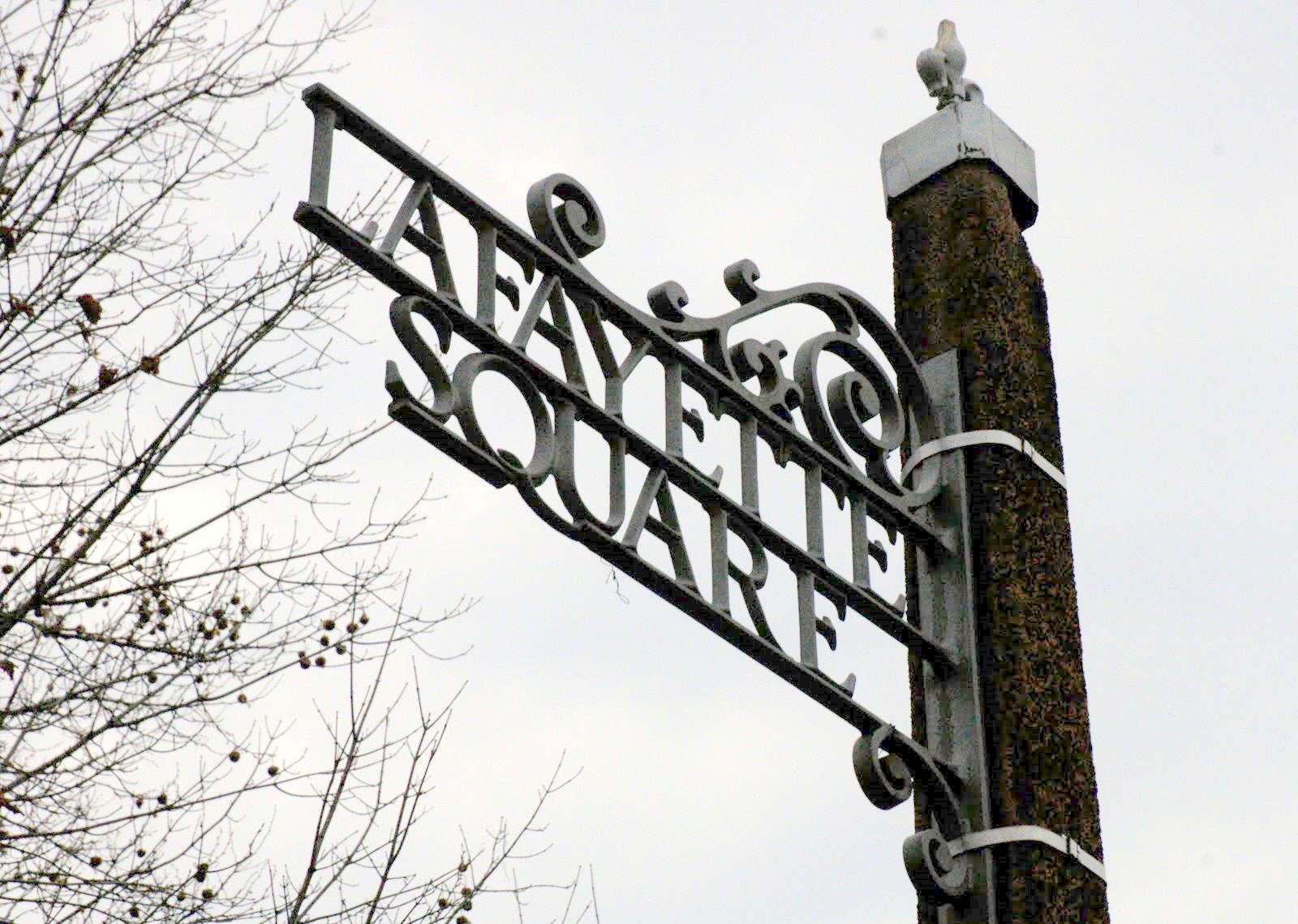







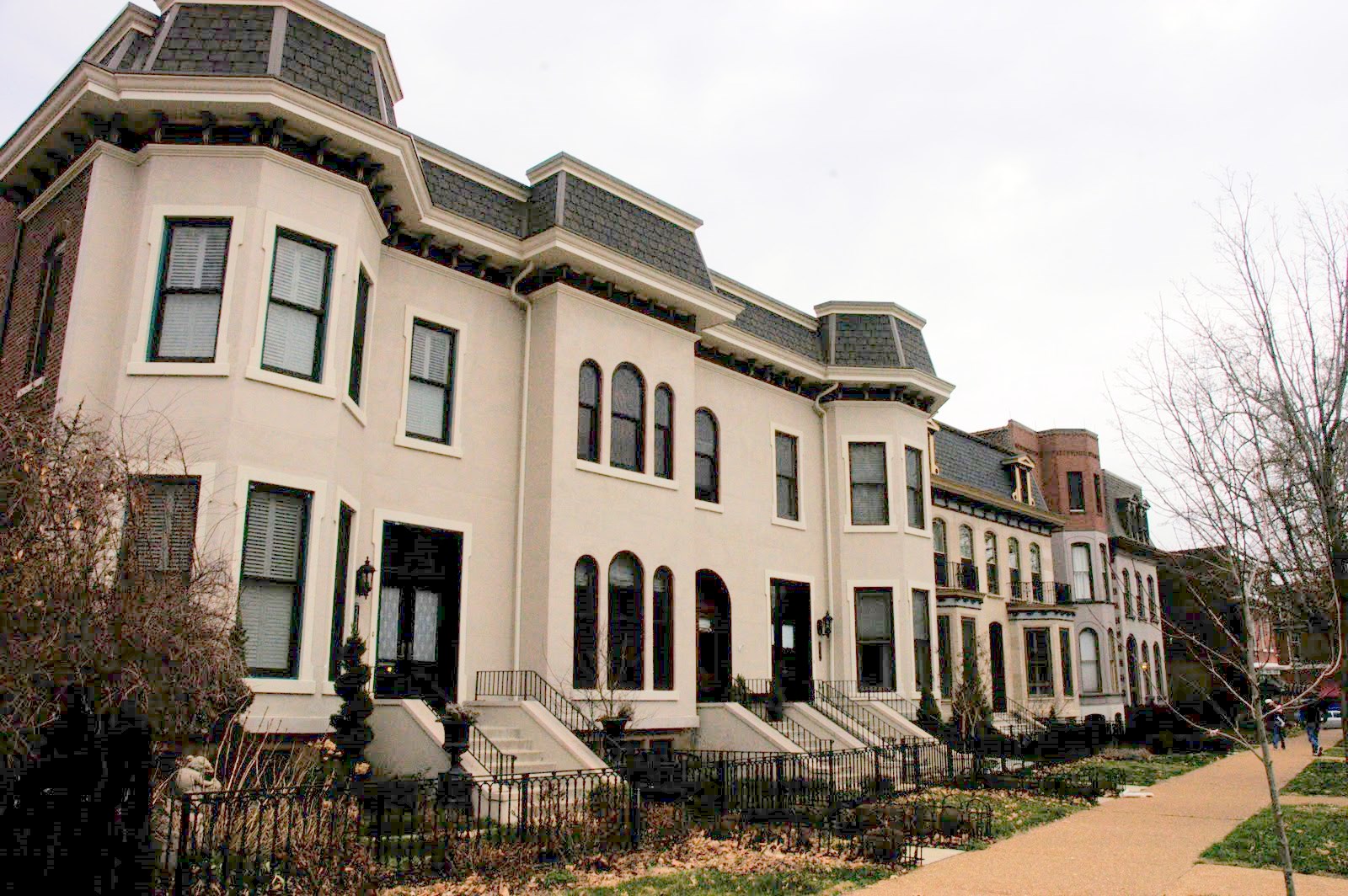

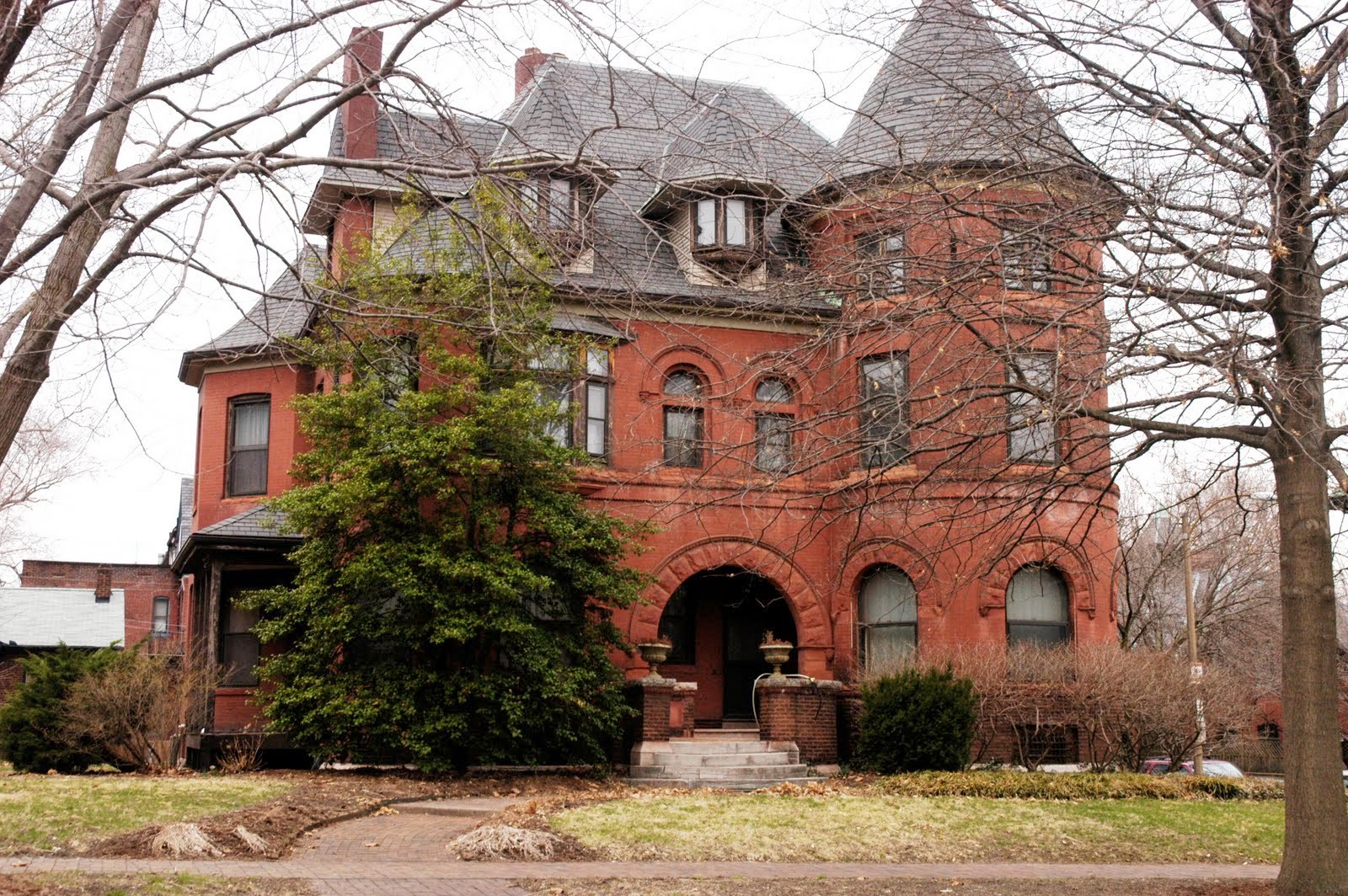


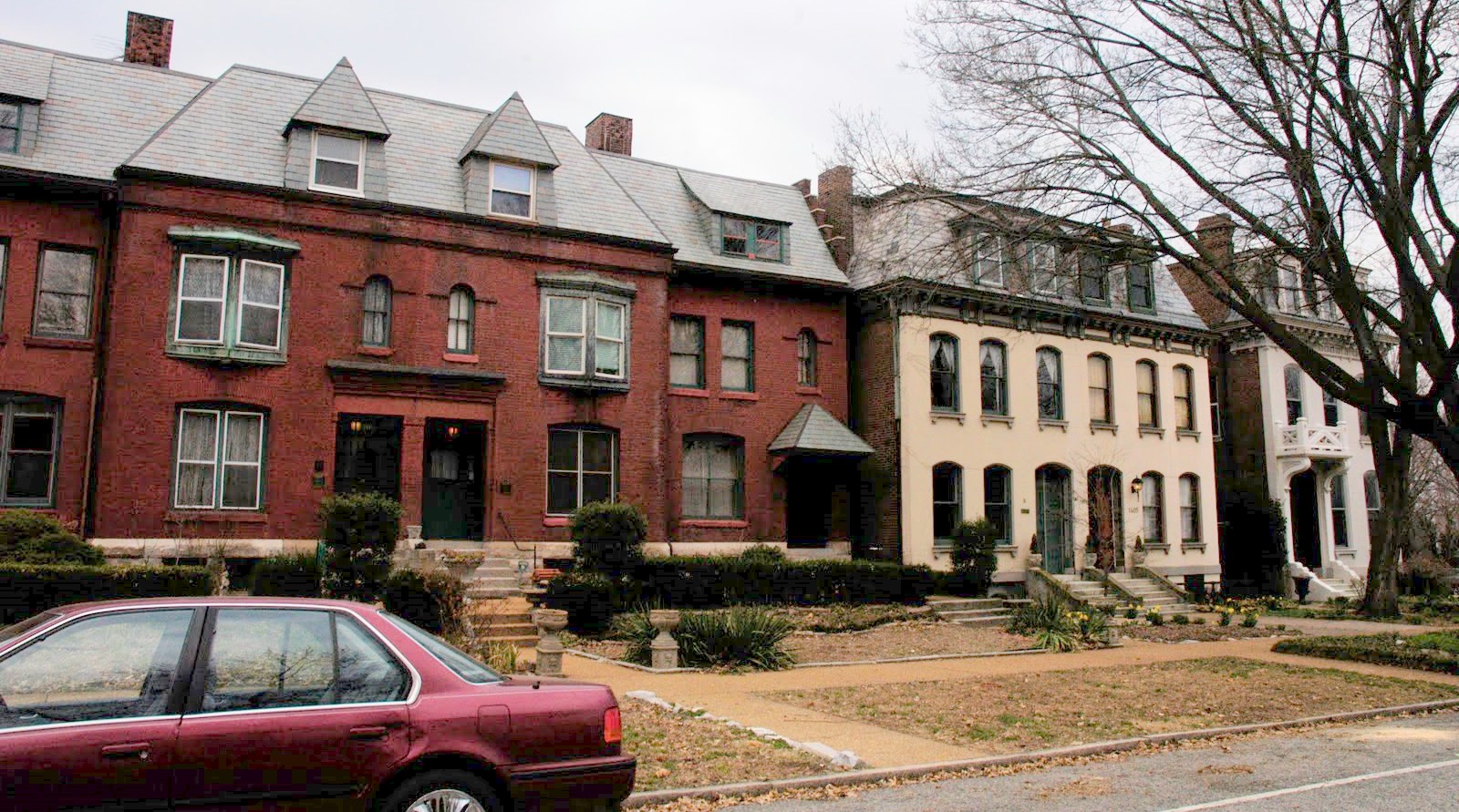




But, it’s the innards of the neighborhood that really stand out to me. The row houses and townhouses add to the charm.
















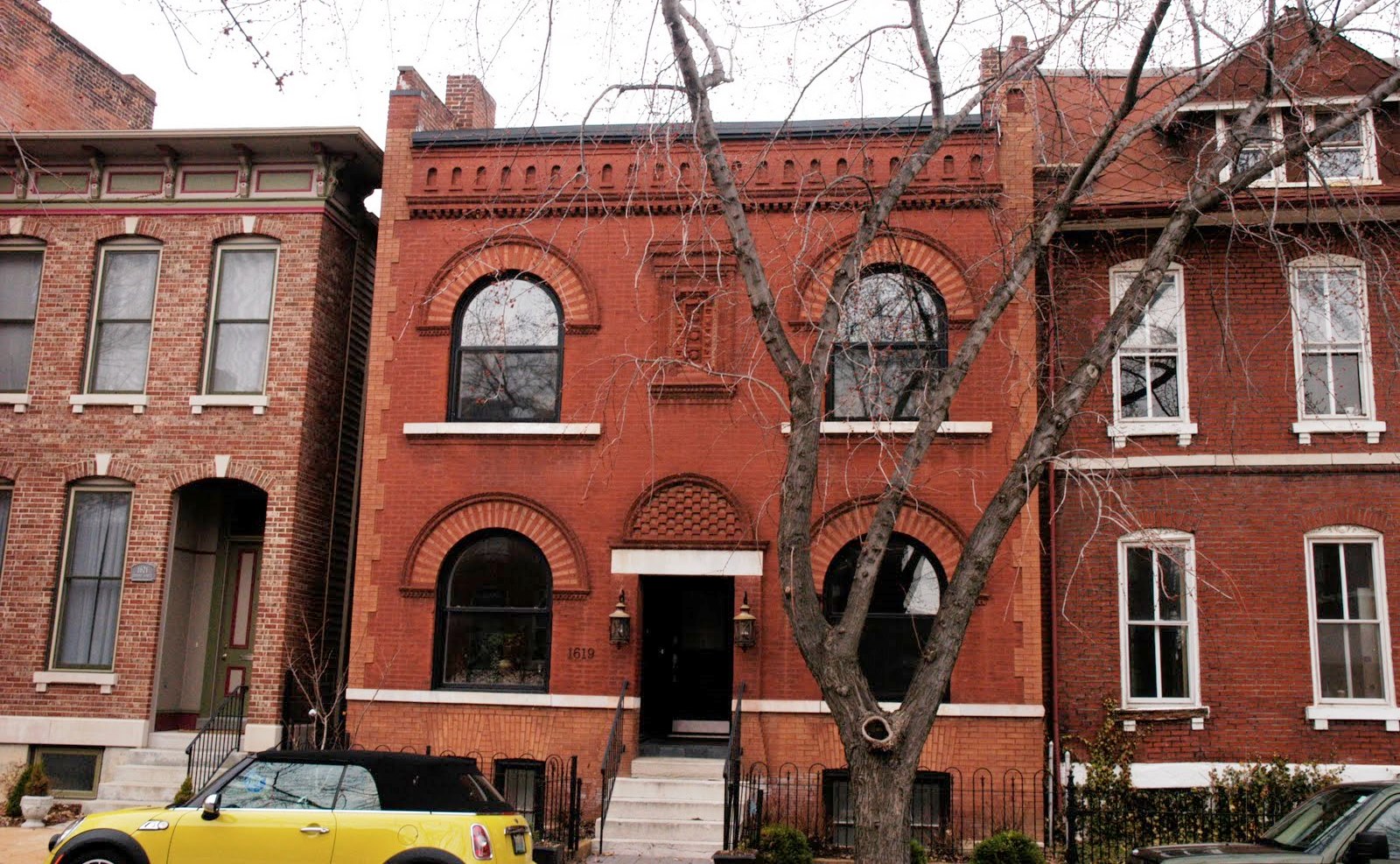





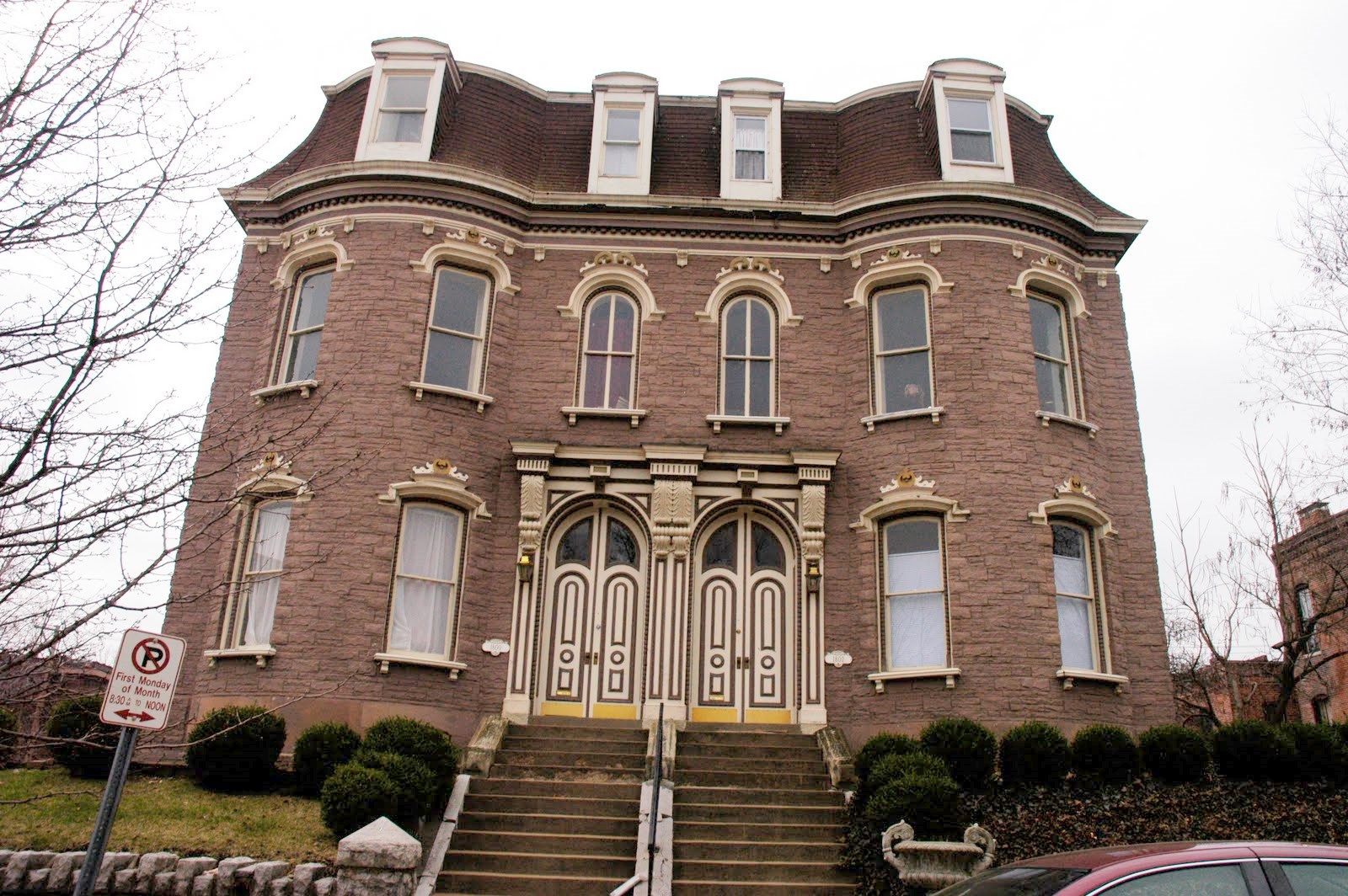











It’s not all large single-family homes. Some nice apartments:
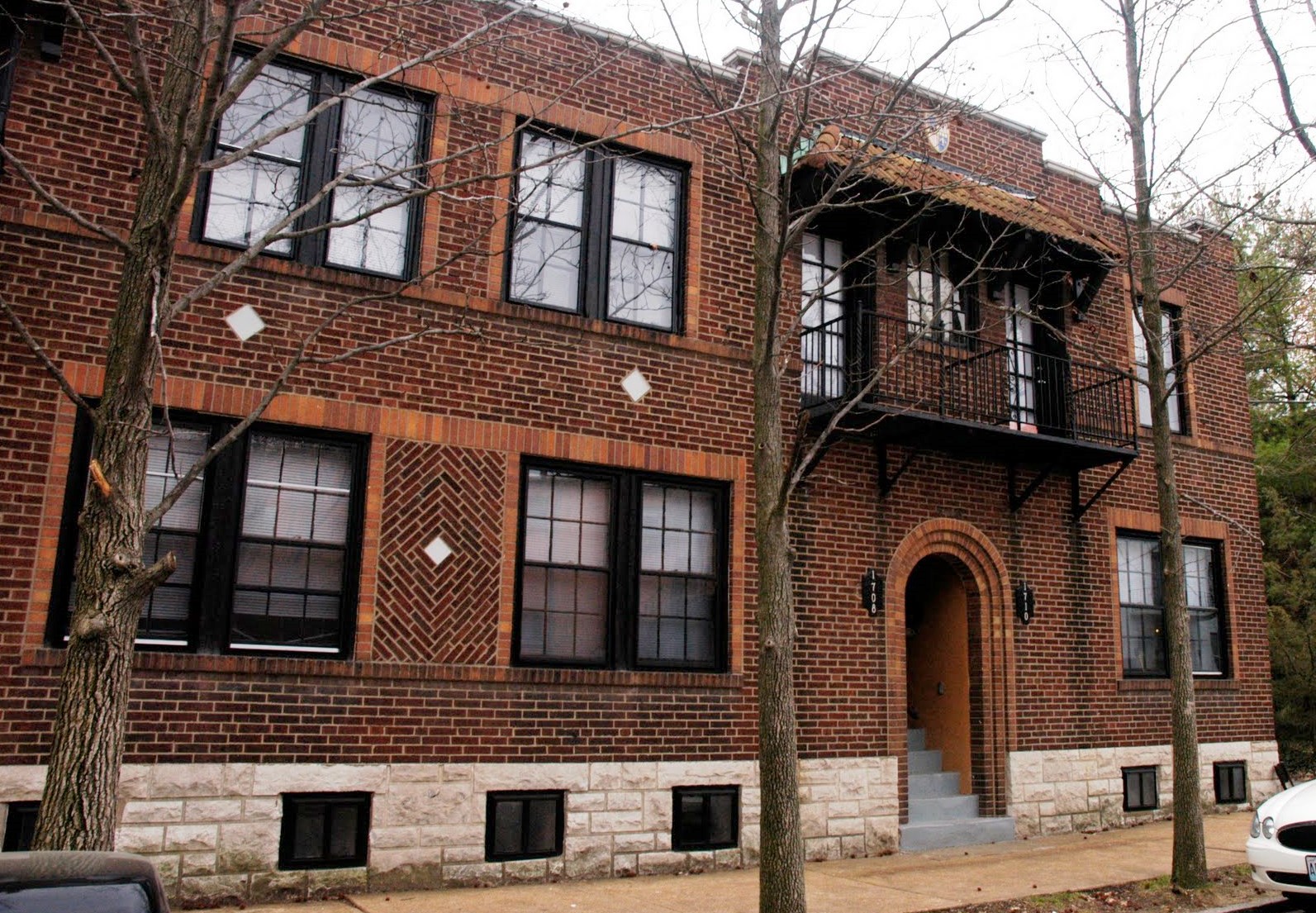









An exception:

This is almost a full service neighborhood. It’s got independent retail, coffee shops, cafes, several restaurants, Square One micro brewery, community gardens, highway access, churches, racial/lifestyle diversity, proximity to major employment areas and the central business district. There is now a pharmacy in the adjacent vicinity; the Barr branch of the library is right across Jefferson in the Gate District neighborhood. You are a short bike ride from City Garden, Busch Stadium, Scottrade Center, Soulard, McKinley Heights, Randall’s Liquor Store, Schnucks Culinaria, the Union Station Metrolink stop, etc.
Shopping, entertainment and relaxation along Park:






Rue Lafayette Cafe:

Community gardening:

Neighbors looking out for each other and not backing down to the idiots:

A former shoe factory converted to condos, and the tasty Eleven Eleven Mississippi restaurant (yellow awnings):
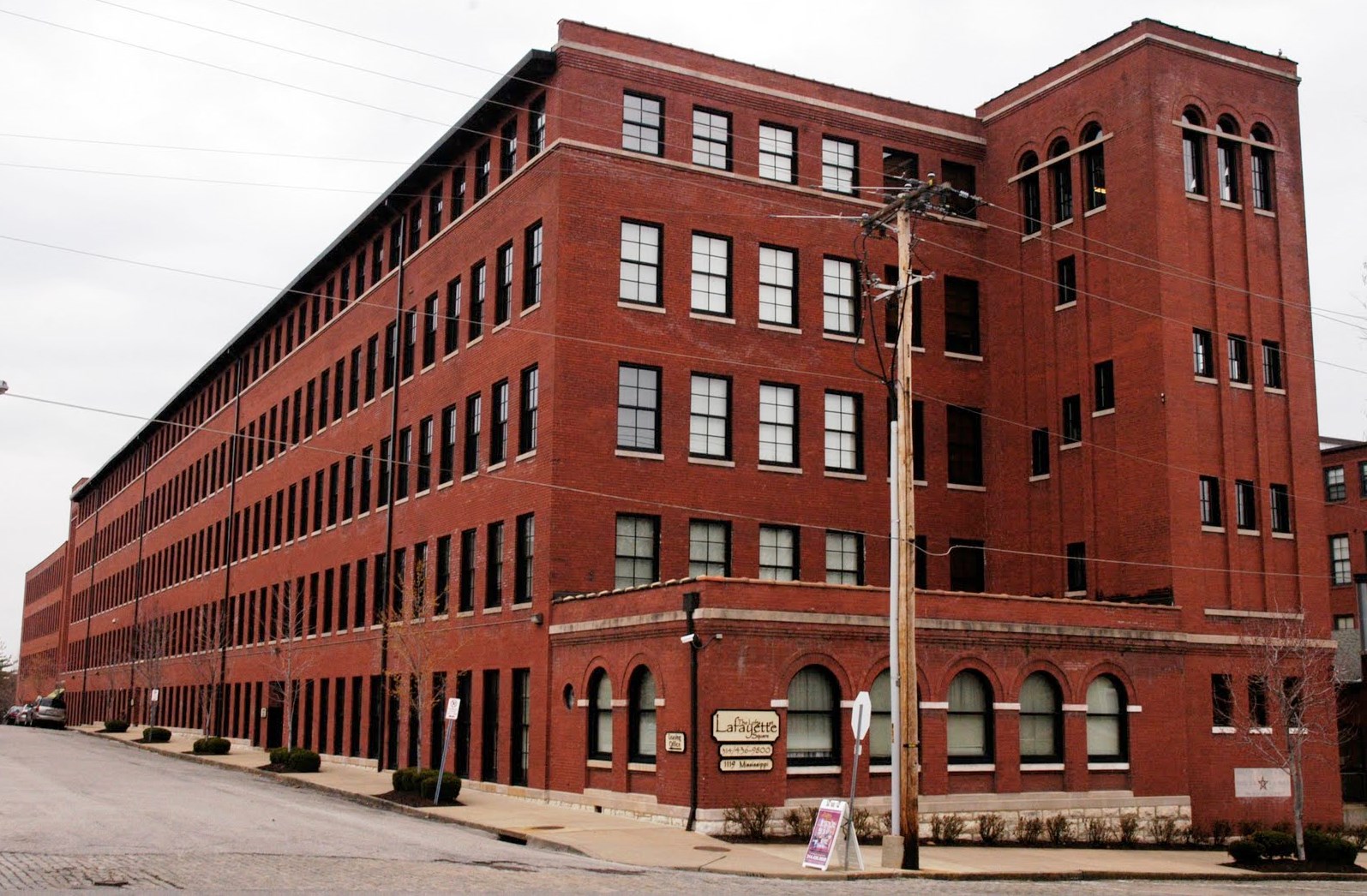

Oh yeah, and I almost forgot…the park. Today I saw a group of people playing old school baseball complete with bare hand defense, wooden bats and period uniforms:


There are some sites along Jefferson and Chouteau that are less than attractive including the former Praxair site, which had a tragic explosion back in 2005.



But there are many other signs of positivity that outweigh the negatives along Chouteau and Jefferson:





Eden Lofts:


There are still some opportunities for further re-use and added density:







Cheers to all the people who have invested their time, money and creativity over the years, toward making this a premier St. Louis place. Keep up the good work!
Finally, a quick history of Lafayette Square from the neighborhood website:
Lafayette Square is a reminder of Victorian St. Louis in its most flamboyant years, the last quarter of the 19th century.
Lafayette Park is the focal point of the Square, a last link to the little French settlement of 1764. It is an extension of the St. Louis Commons which was reserved for public use as pasture and farm land in the European tradition. It remains the only land within the city never under private ownership.
The 30 acre park was platted in 1836, making it not only the oldest of city parks, but also the first park west of the Mississippi River. The name commemorates the popular hero of the American Revolution who visited St. Louis in 1825. For some years the area was considered too remote for practical residential development and locally the park was known as “Grimsley’s Folley”. Colonel Thornton Grimsley, a member of the Board of Aldermen, enthusiastically supported retaining a portion of the Commons for the enjoyment of all the citizens of St. Louis. With a population of less than 16,000 and municipal development hardly past the present Fourteenth Street, the public’s pessimism is easily understandable.
The city made few improvements in Lafayette Park in the 1840’s and 1850’s, but by 1860 the population of St. Louis had increased 900% over the previous 20 years. During the prosperous post-Civil War years, Lafayette Square became one of the most fashionable neighborhoods in St. Louis and its park became the most popular recreation spot in the city.
Individuals of both local and national reputation built imposing residences here. Among them were Montgomery Blair, appointed Postmaster General by Abraham Lincoln; David Nicholson, prominent wine and grocery merchant; Louis Brandeis, later U.S. Supreme Court Justice; D.C. Jaccard, noted jeweler; Charles Nagel, Secretary of Commerce and Labor in the Taft Administration; Mrs. Firmin Desloge, widow of the mining magnate; Joseph LaBarge and Horace Bixby, famed steamboat pilots; and three St. Louis mayors – John S. Thomas, James Britton and Henry W. Kiel.
But by the 1890’s newer St. Louis neighborhoods developing to the West were enjoying increased popularity. The devastating cyclone of May, 1896 hastened the Square’s decline. Destruction to the park and surrounding residences was so extensive that many entrenched families apparently decided to join the migration.
By the 1920’s the neighborhood around Lafayette Park was a neglected, slightly disreputable part of the Near Southside. Many splendid dwellings became rooming houses and multiple units occupied mostly by transient renters.
The grandeur of Lafayette Square remained only a faded memory and some distinguished structures failed to escape the wrecking crews. Even so, amid the decay and neglect, the neighborhood never entirely relinquished its Victorian charm and unique character.
In the late 1960’s a small core of individuals with a fondness for old homes entered the scene. Eager to accept challenge, they organized the Lafayette Square Restoration Committee and encouraged others to discover the rewards of restoration in a cosmopolitan urban atmosphere.
Subsequently, Lafayette Square has enjoyed a resurgence unparalleled in St Louis during an era of mass exodus to the suburbs.
In 1972 the city acknowledged, by ordinance, Lafayette Square as its first historic district. In 1973 the U.S. Congress placed Lafayette Square on the National Register of Historic Places. A Historic Code preserves the neighborhood for future generations to see and enjoy.
*This guide was first published in March 2010
***In August, 2020 I revisited the neighborhood and the following includes updated commentary and photos.***
Misses On Original Tour
Lafayette Square is small and easy to cover, so I feel like it’s all there. I will add some new photos since I have a better camera now and you can see how sustainable landscaping is being taken serious. Less grass and yews, more diverse perennials and porous spaces.
I guess another miss would be that there really has been a lot of infill over the years. This is something you have to look really hard for. Sometimes it jumps right out at you, but in most cases, the modern infill seeks to blend with the historic homes and they do it extremely well.
More on this phenomena in Noticeable Changes, but here are a few quick examples of the modern infill spectrum.
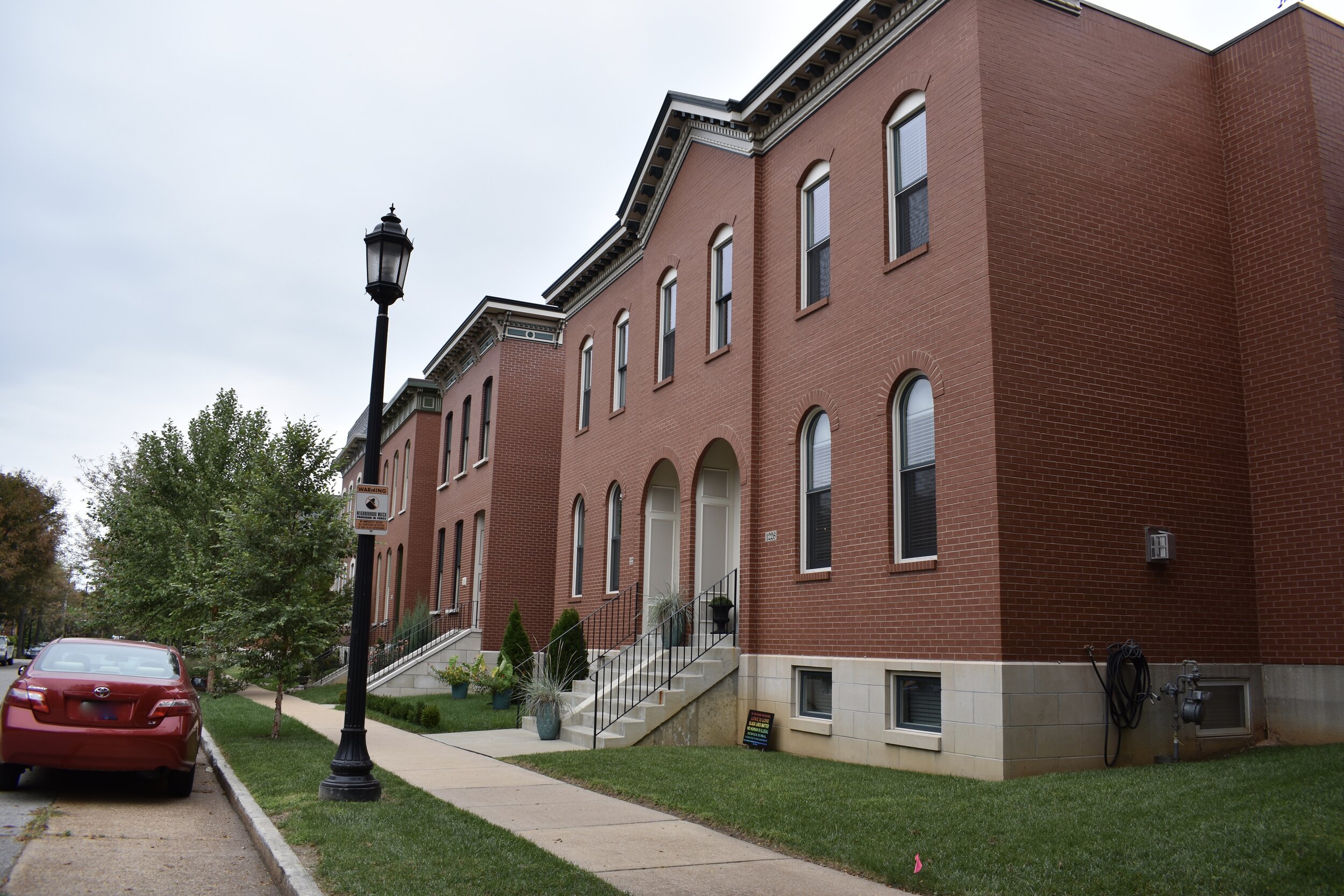


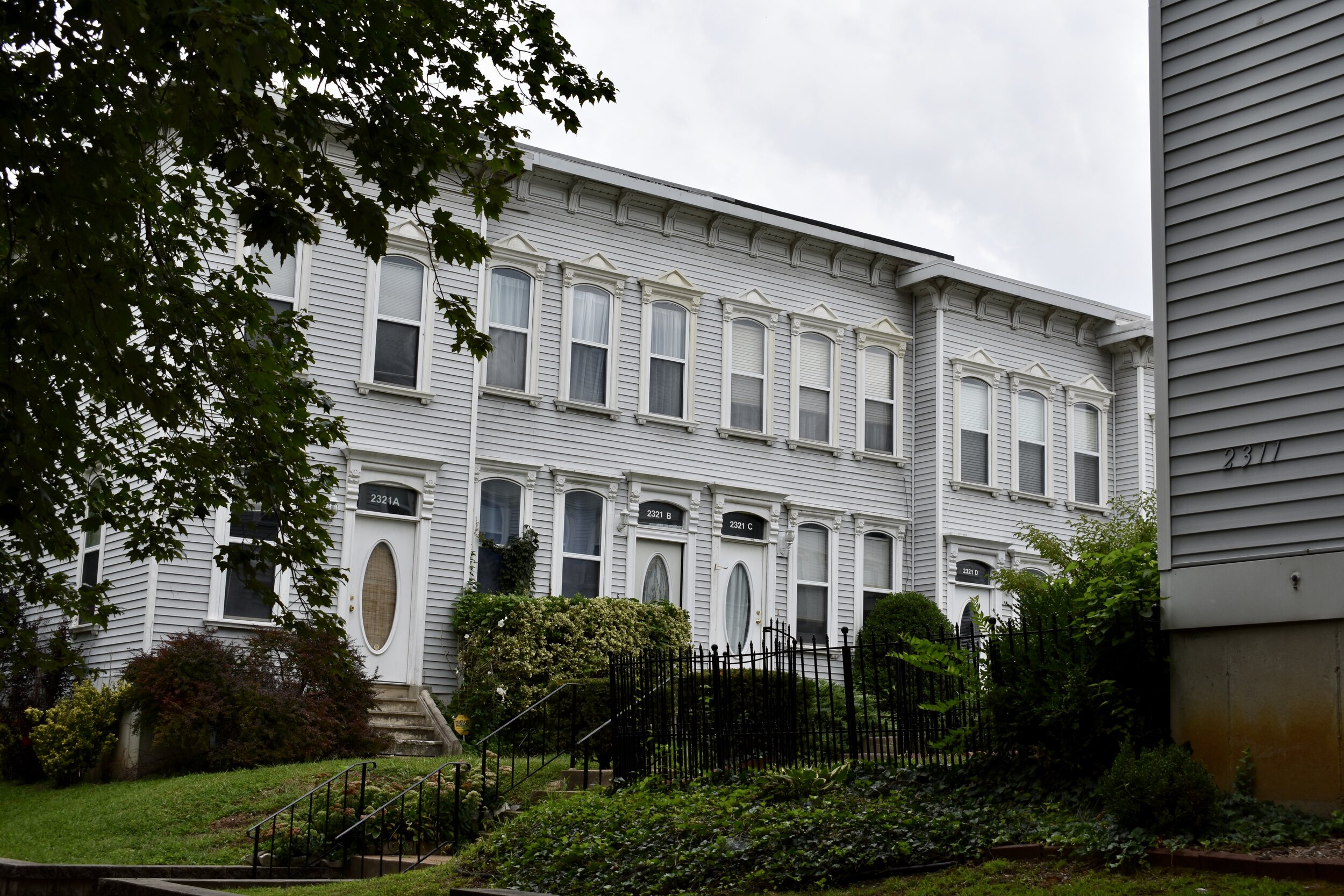
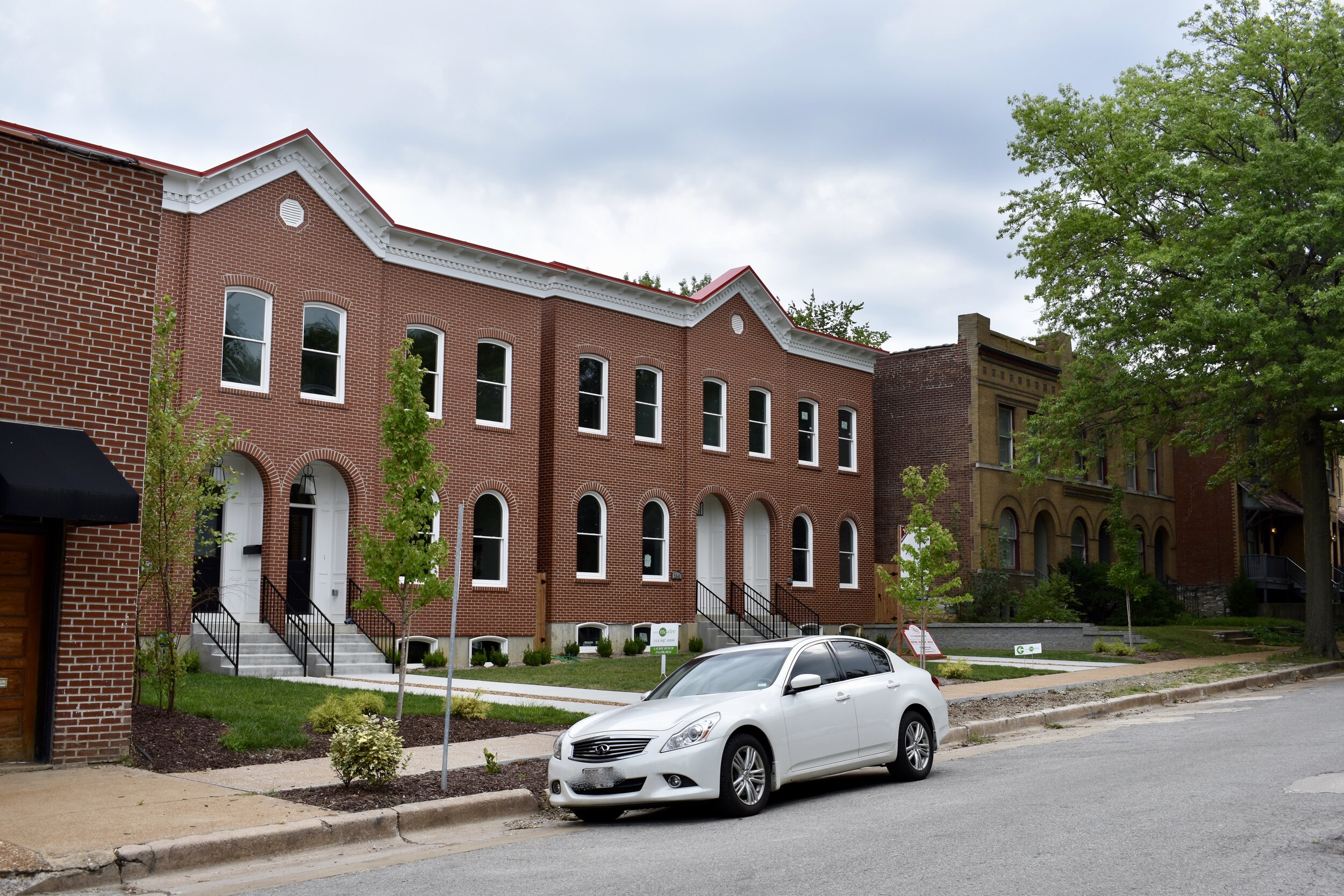
I’ll break the new photos into two groups, the stereotypical Lafayette Square homes, including the “painted beauties”. The second group will include some of the diversity the neighborhood brings, with flounders, alley houses, apartment buildings and much, much more.
When people mention Lafayette Square the following are images that come to my mind.
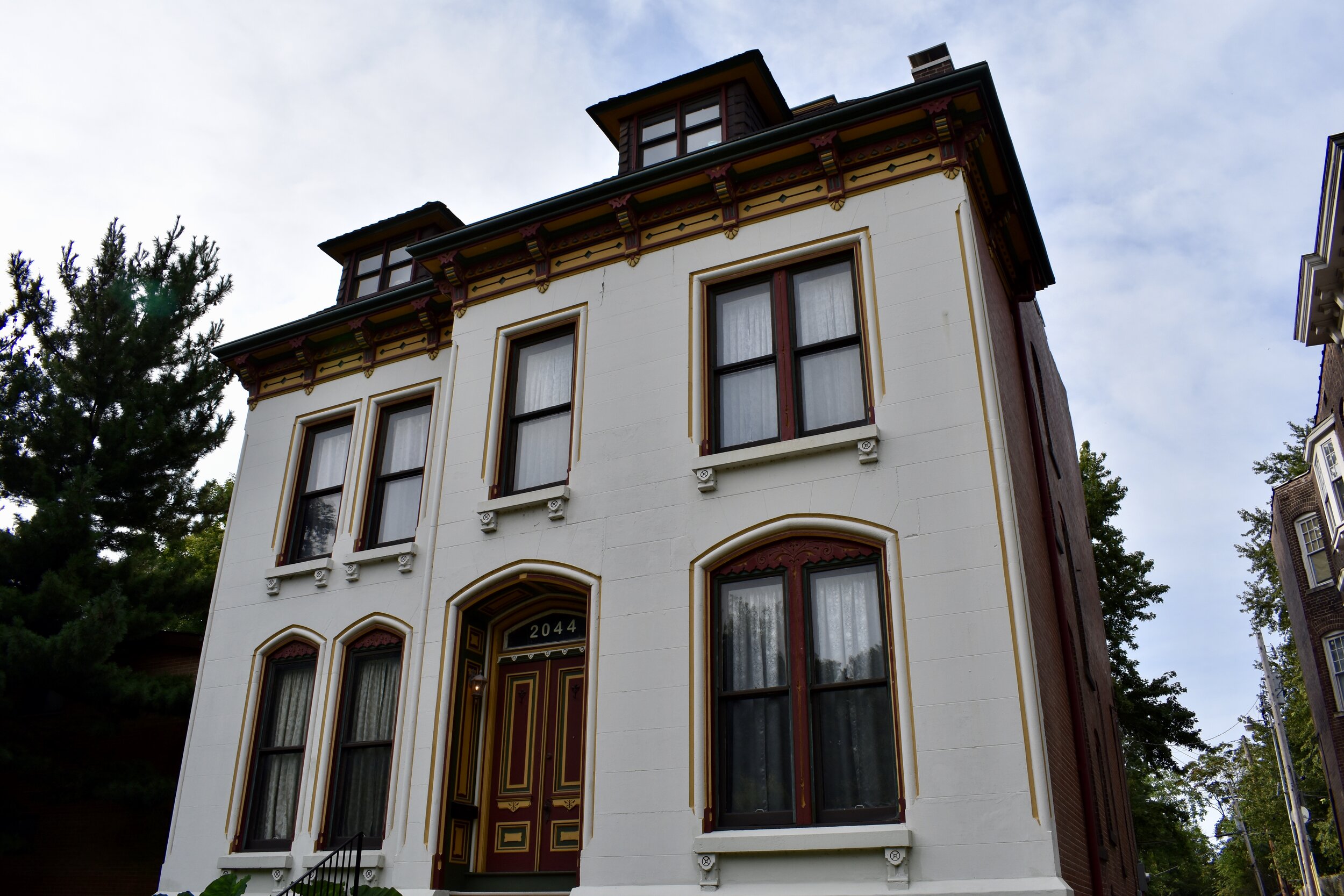

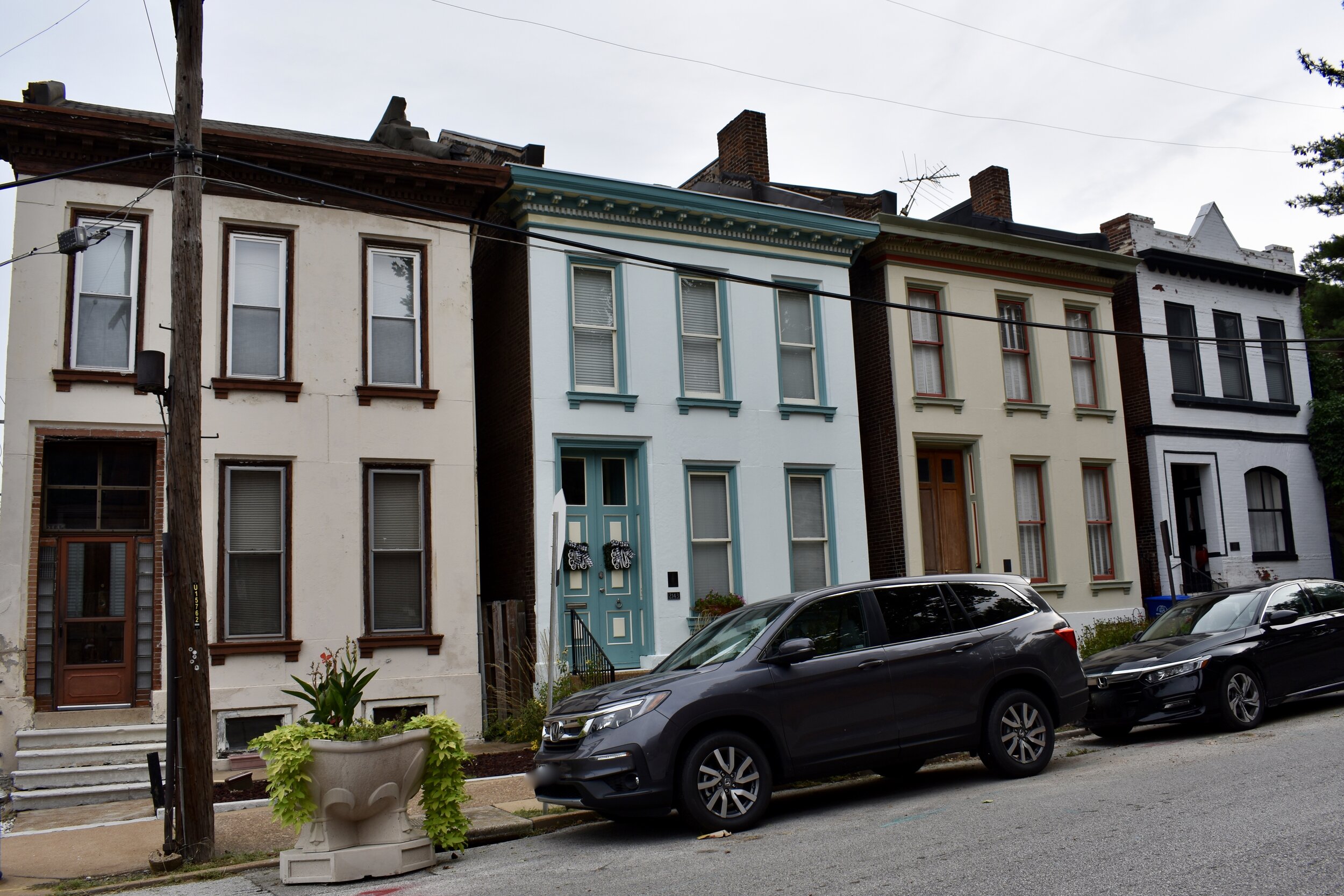



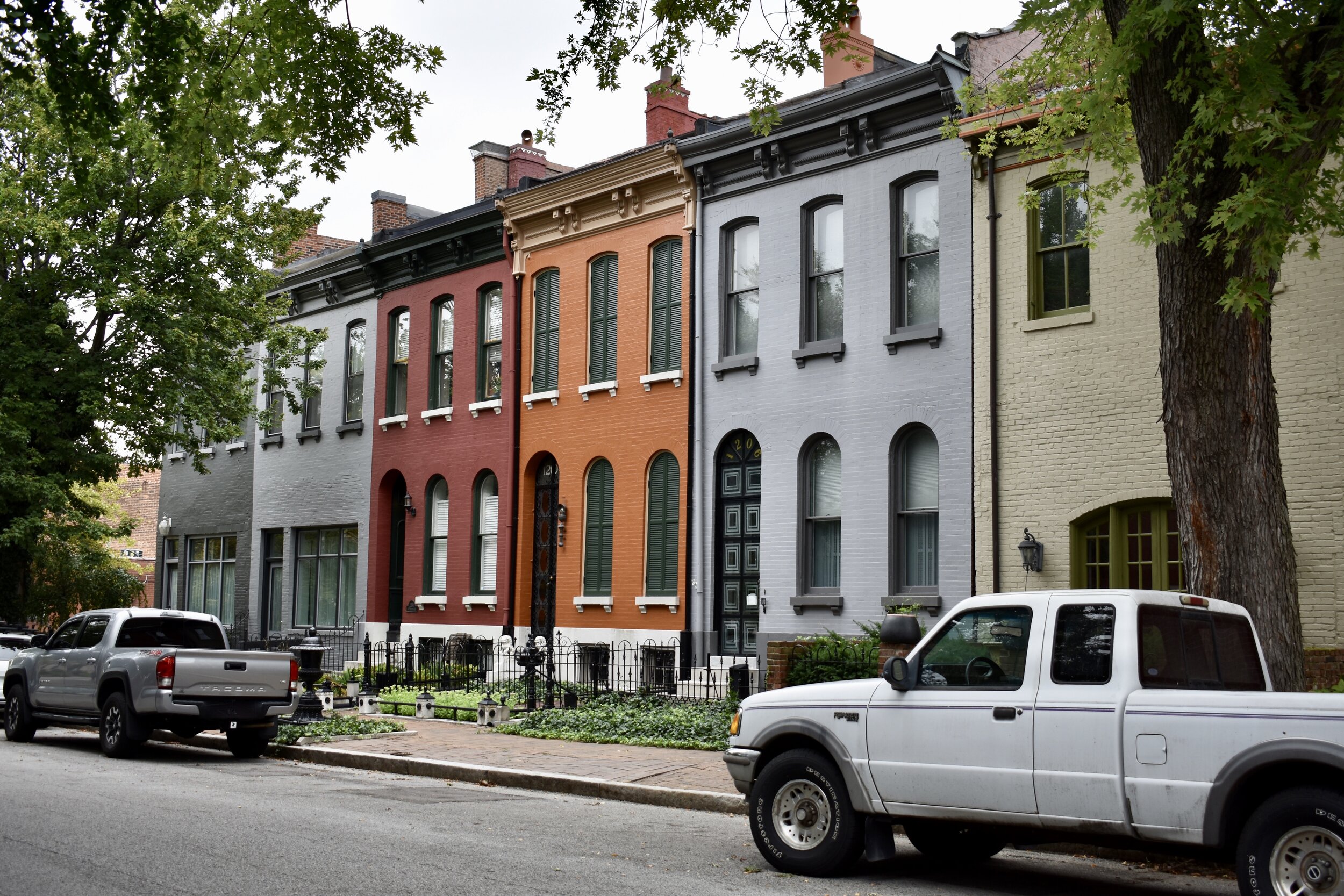
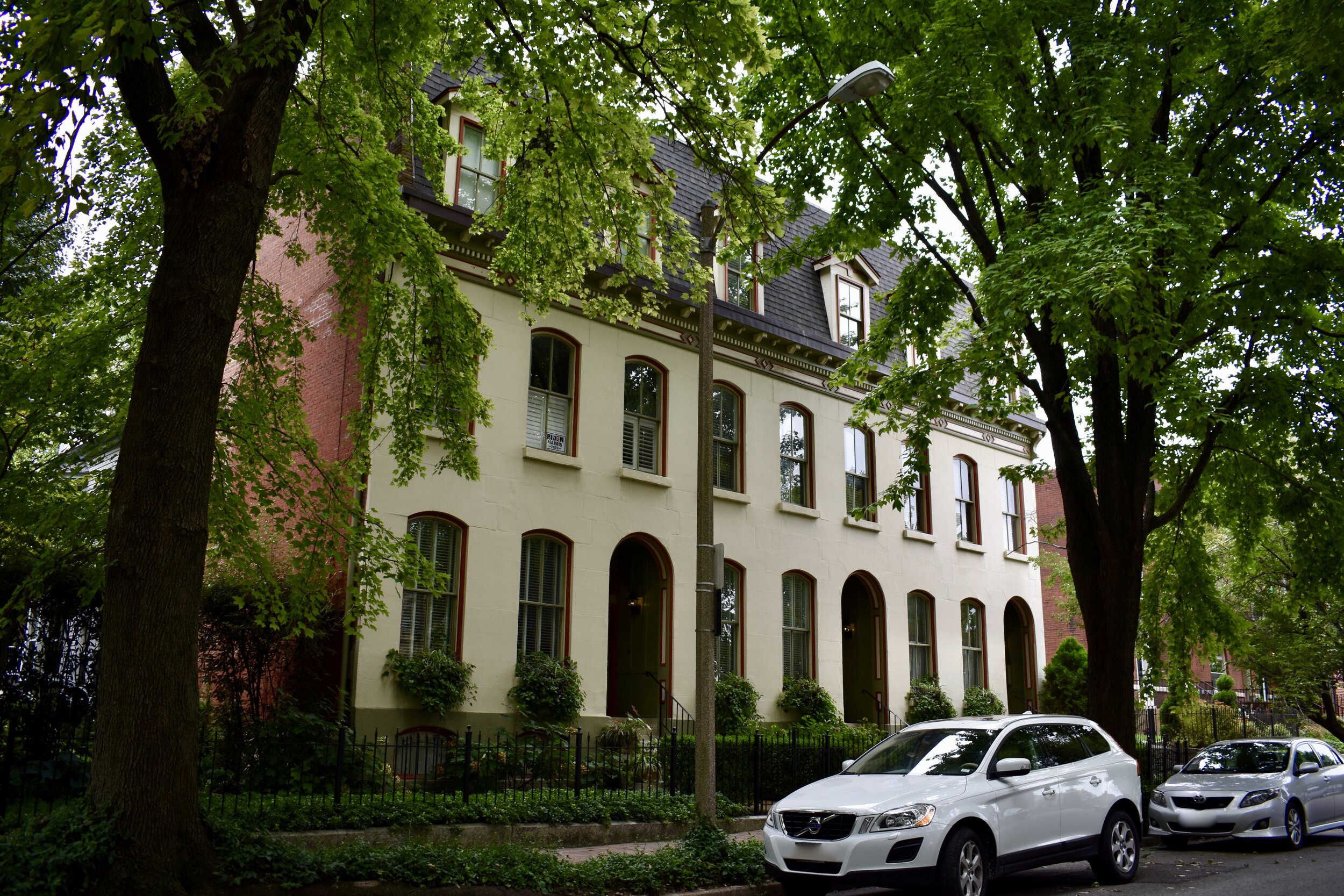

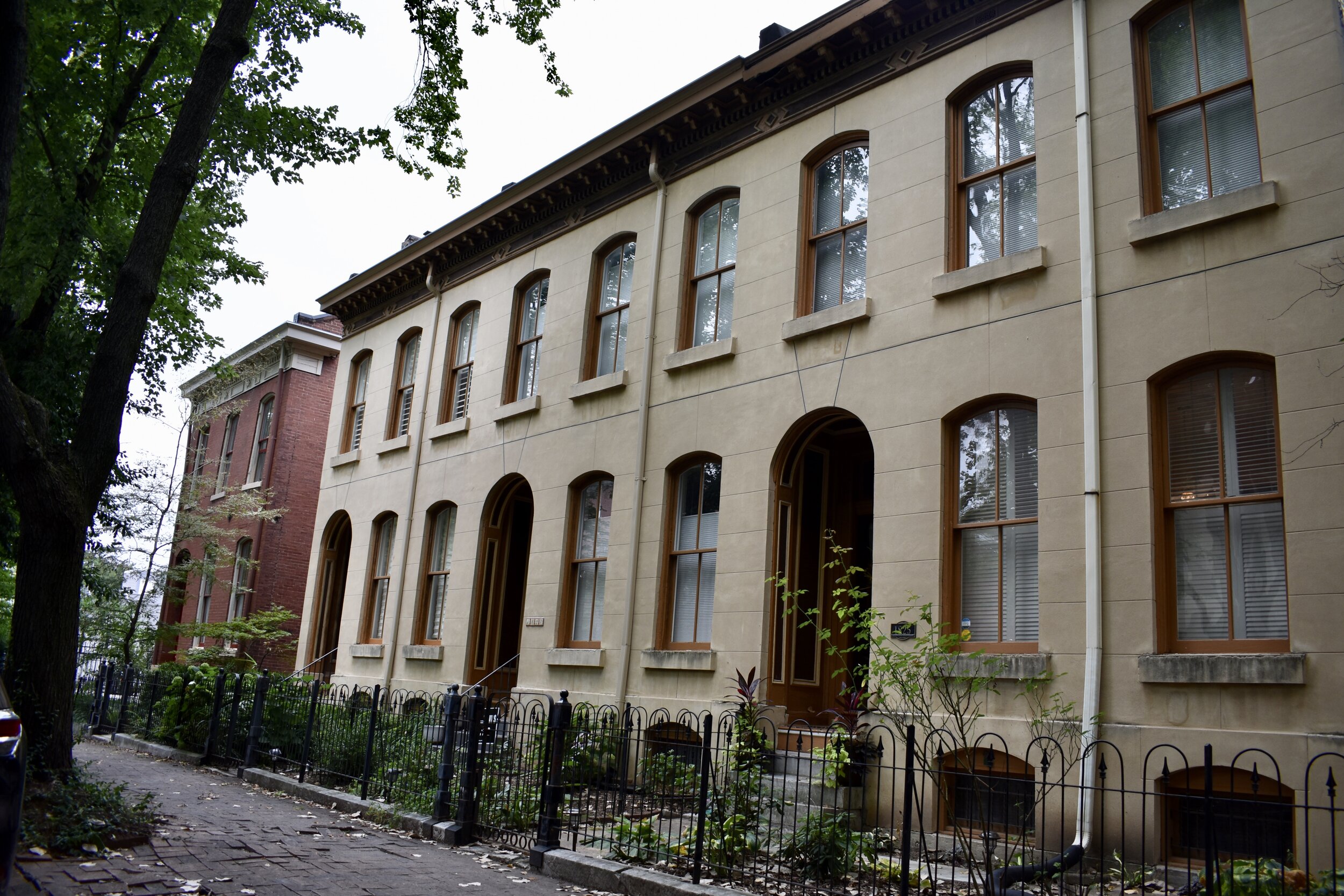
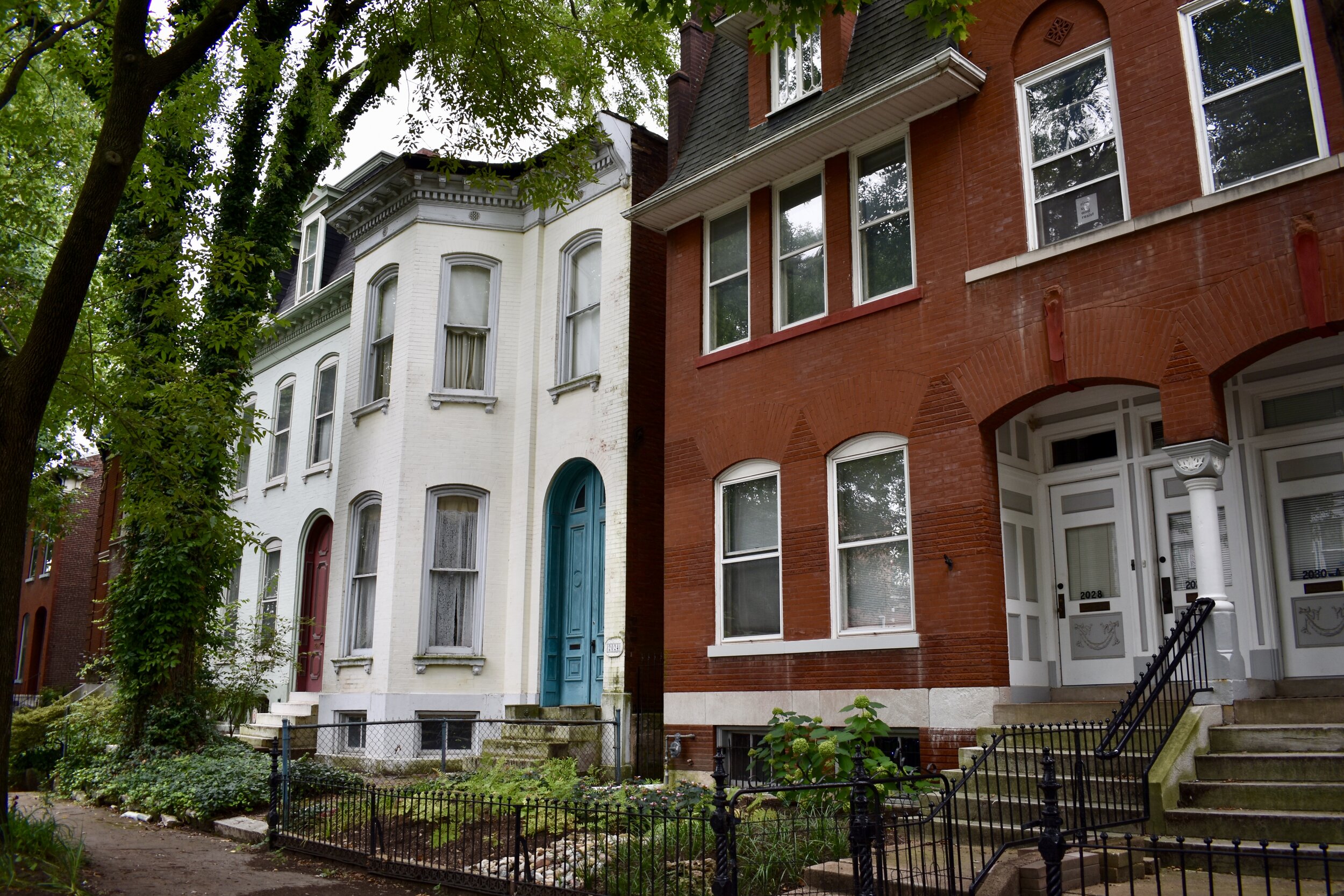
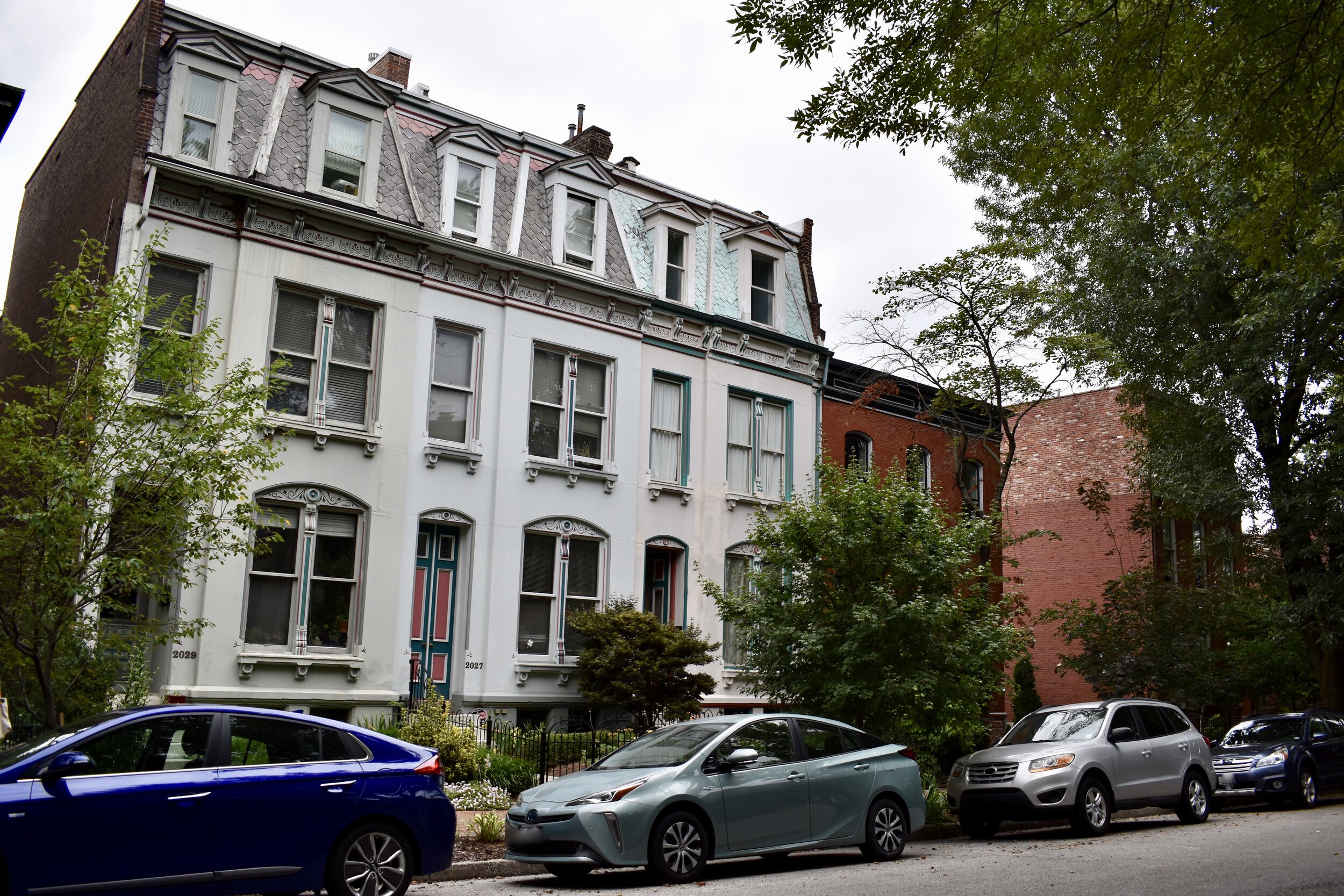


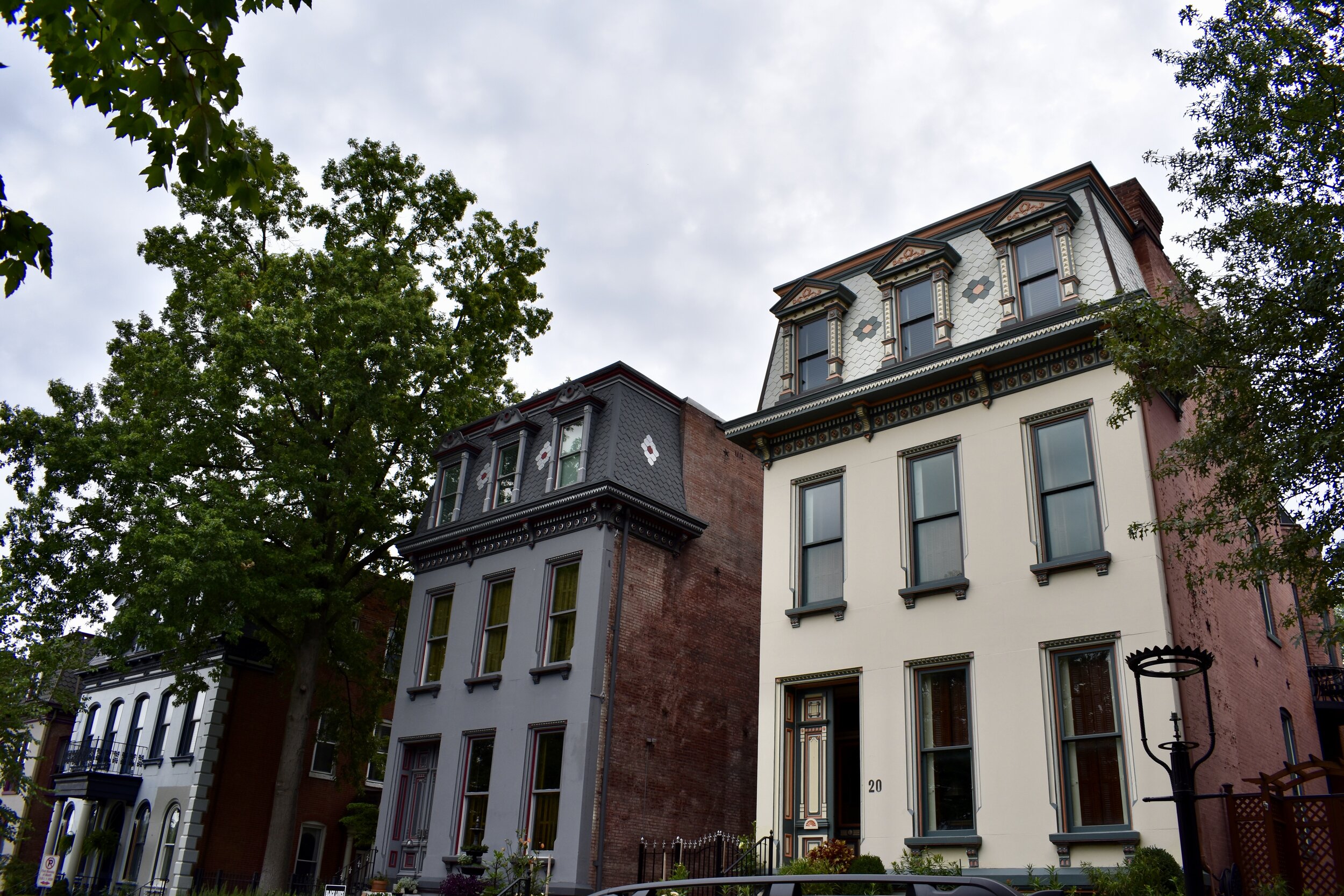


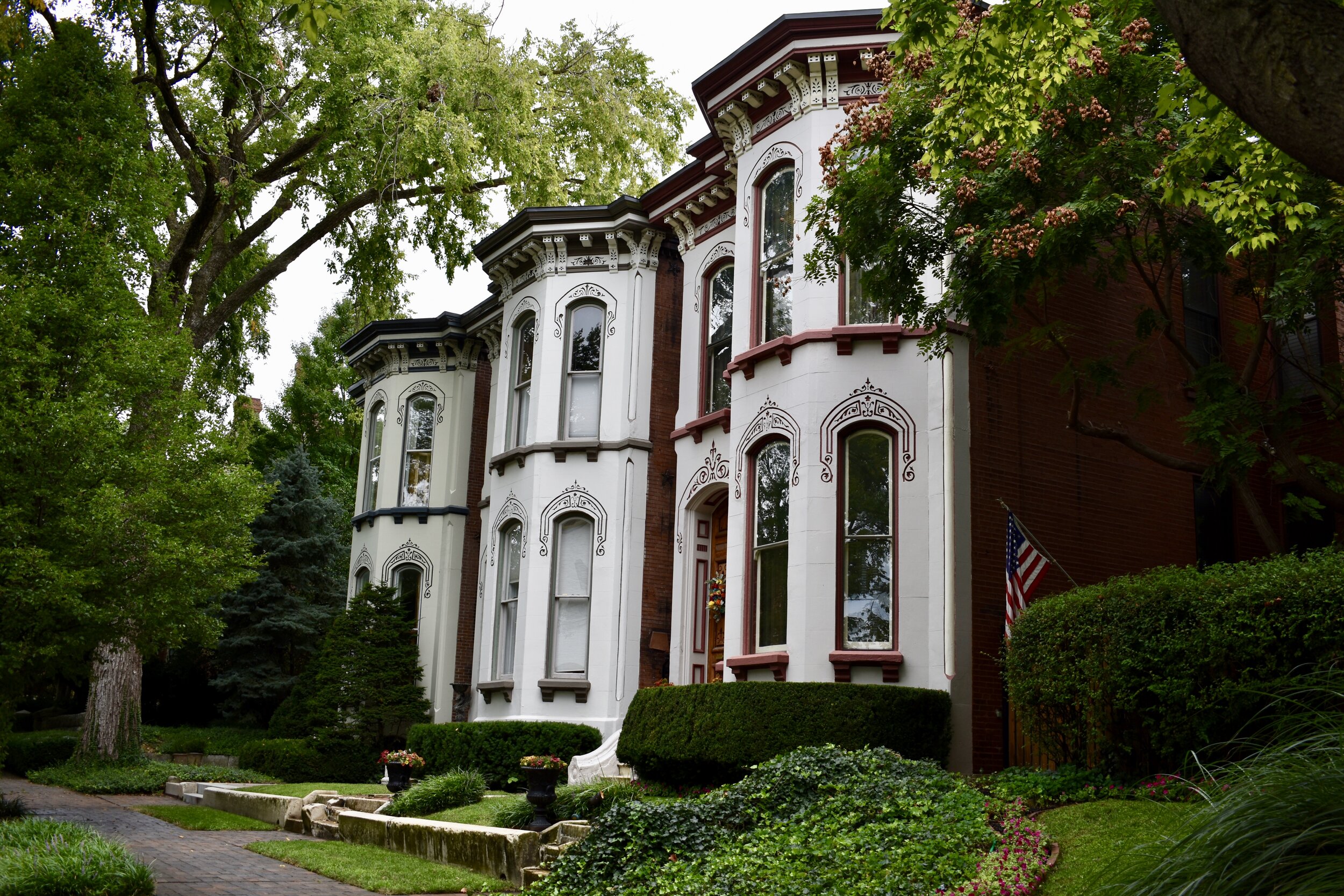



But, there is so much more to appreciate and the diversity in styles is apparent all over Lafayette Square.
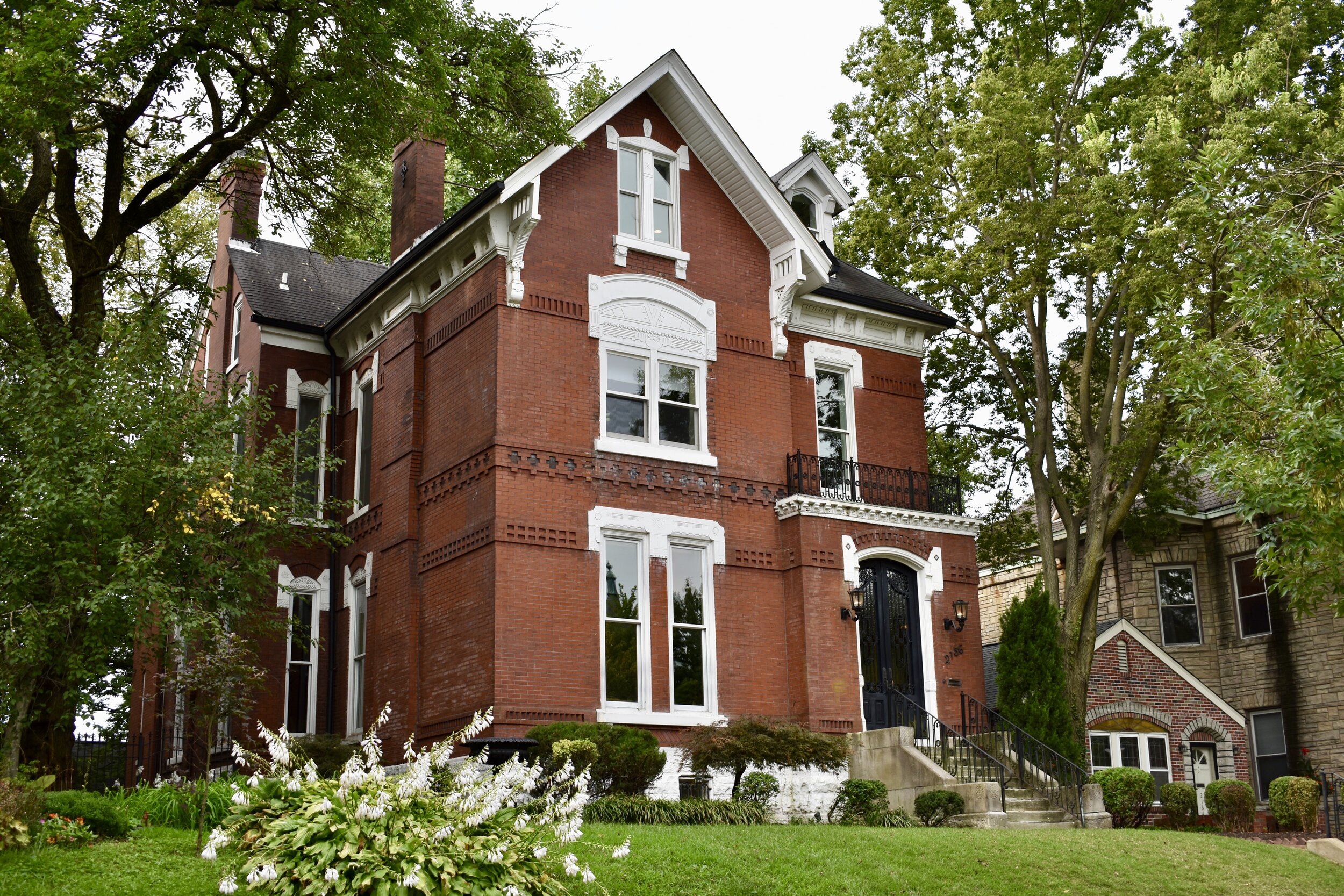
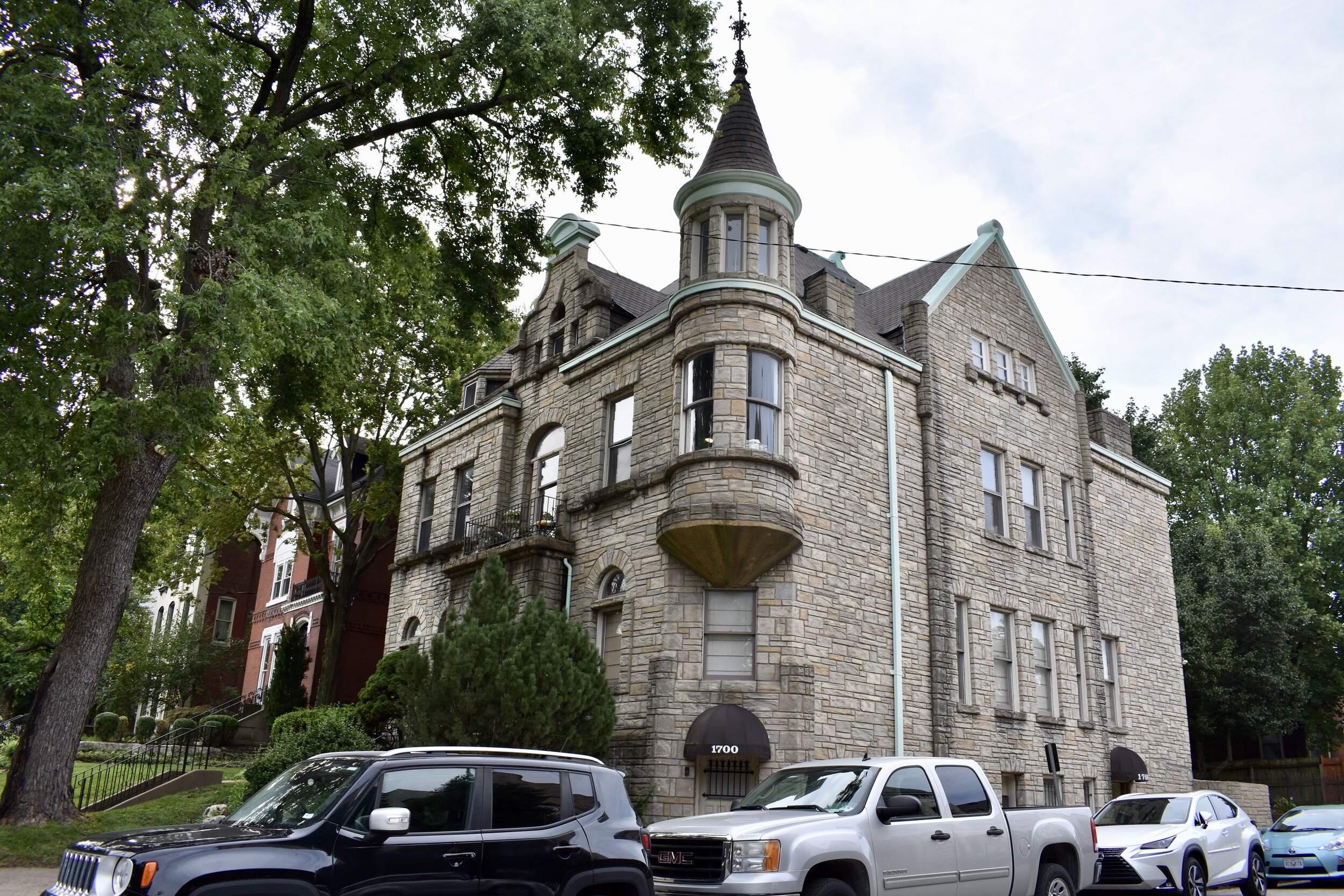

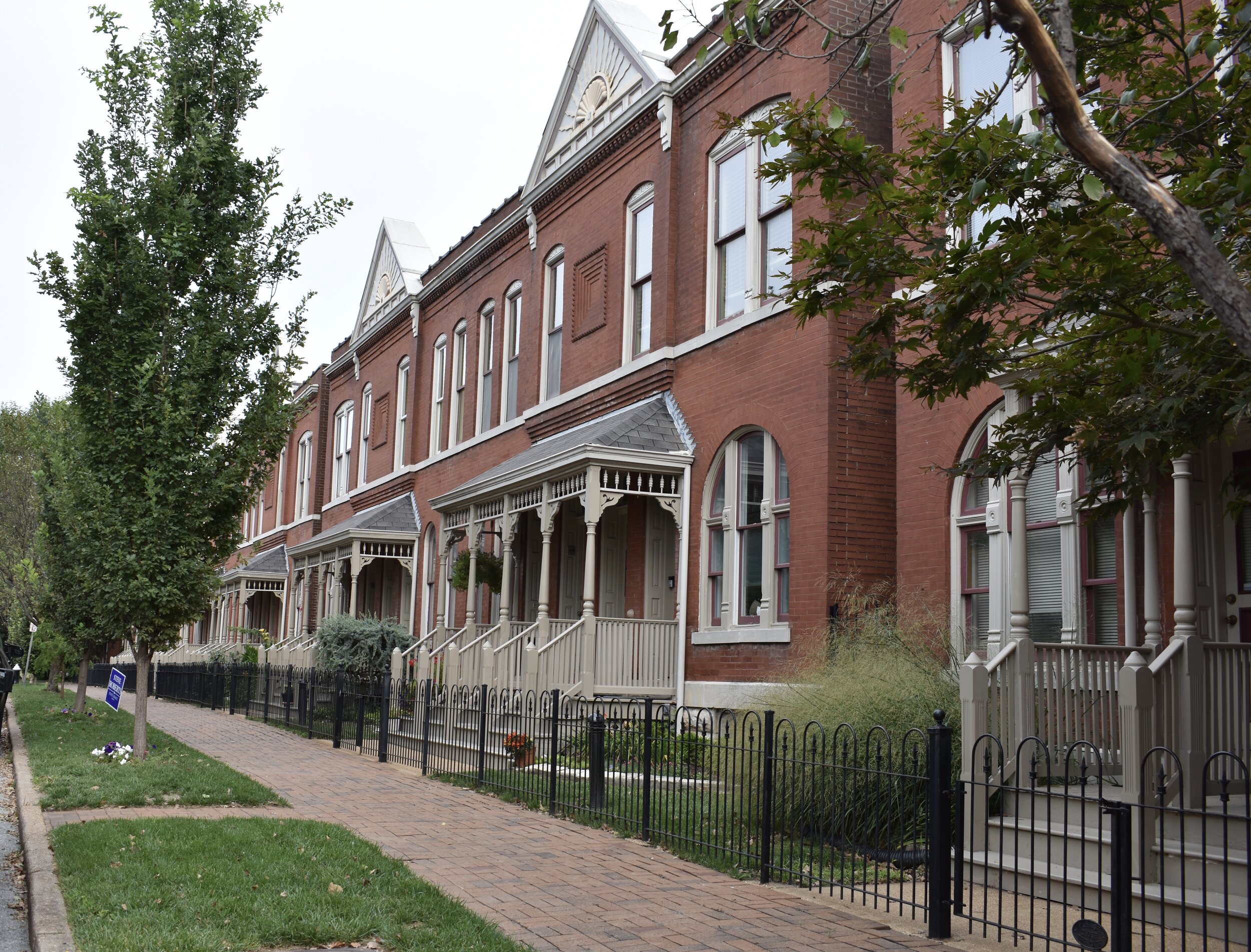
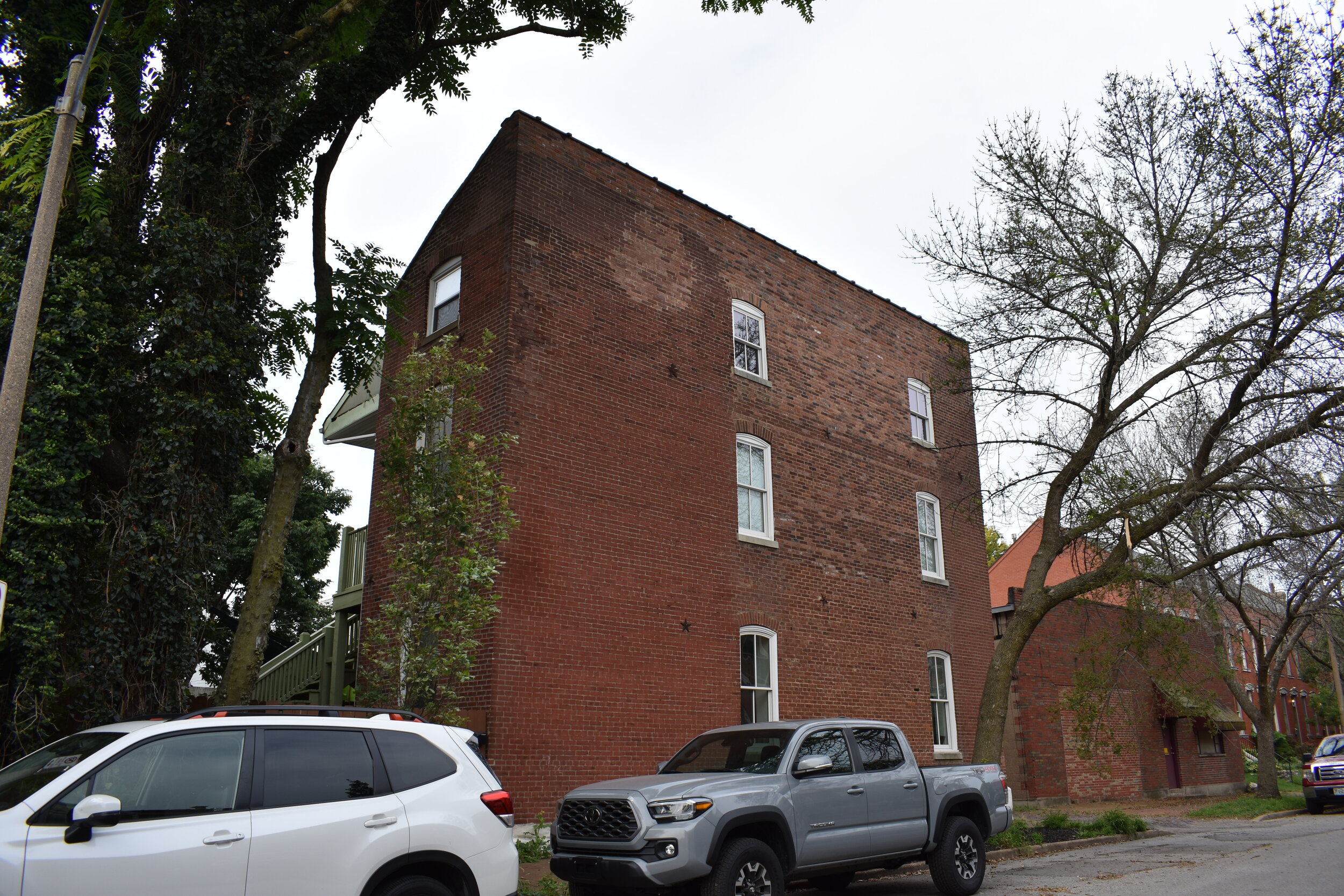
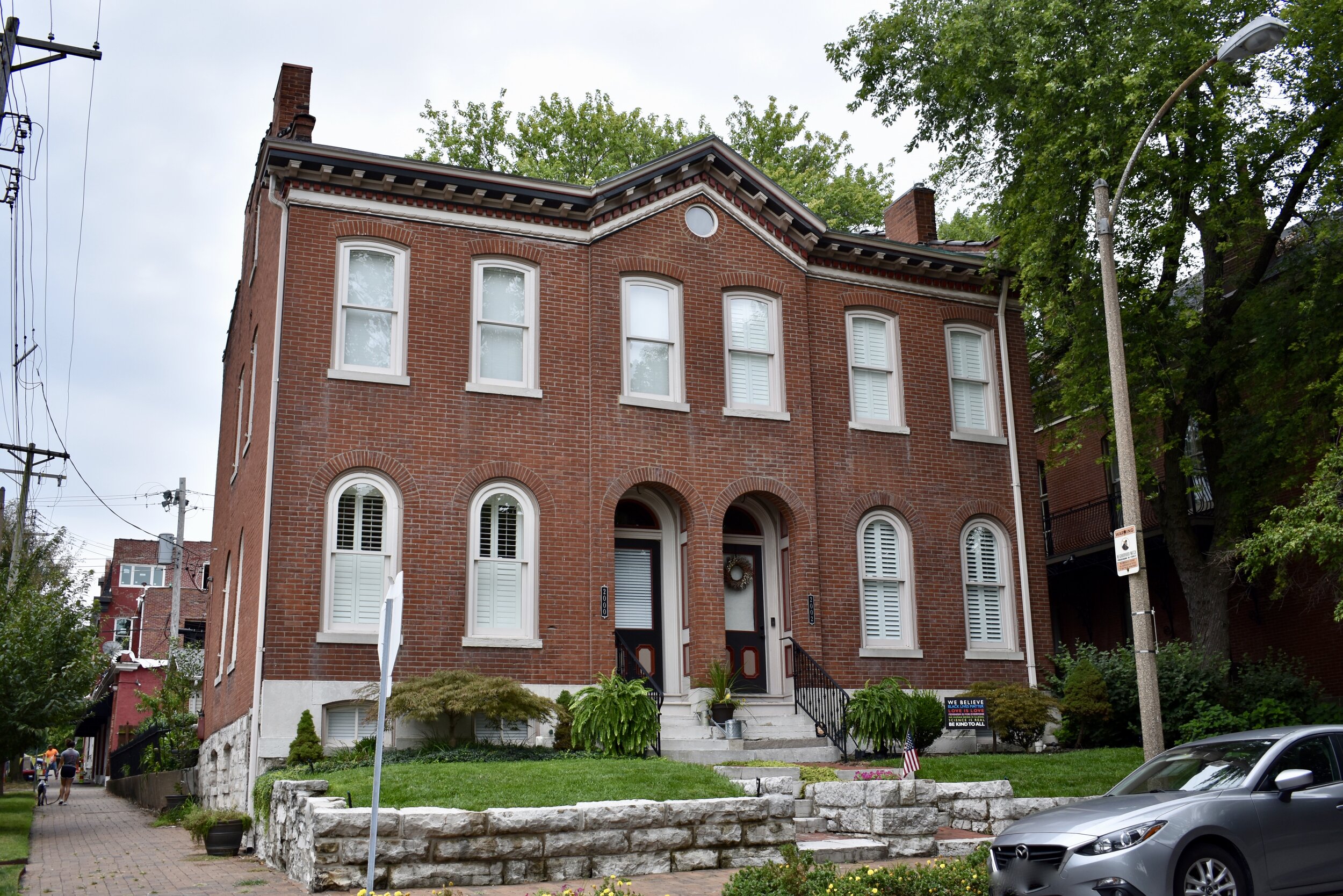
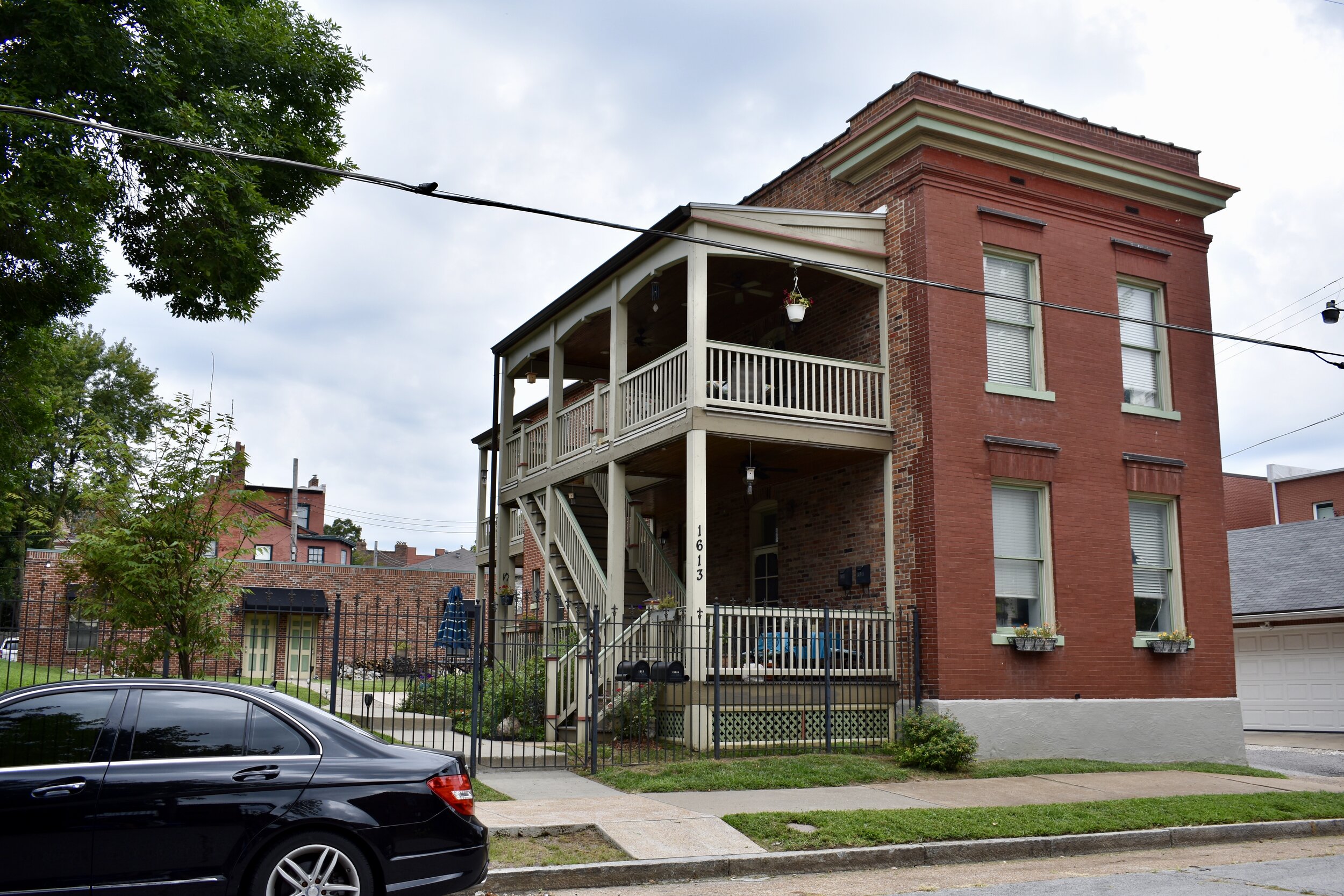
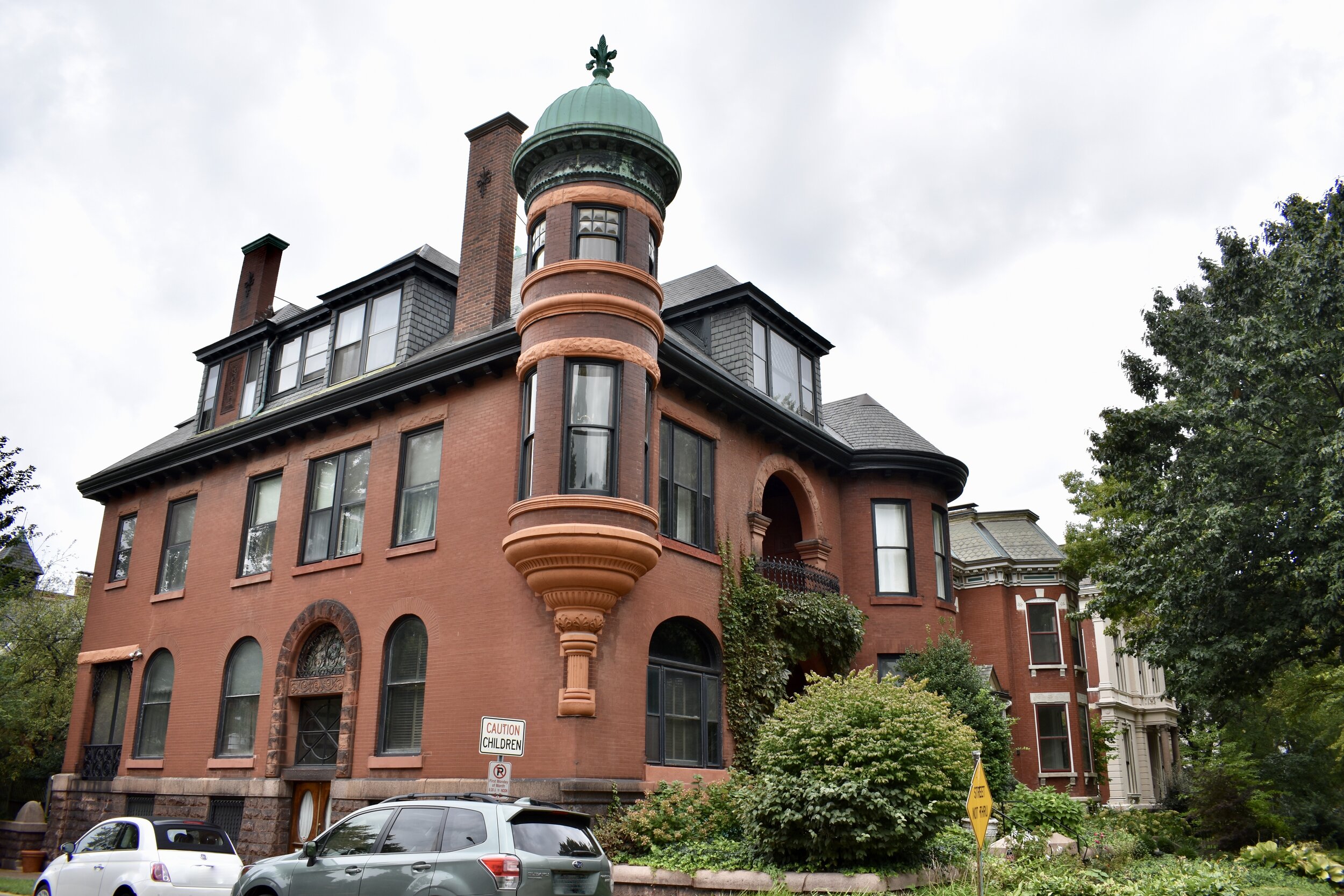
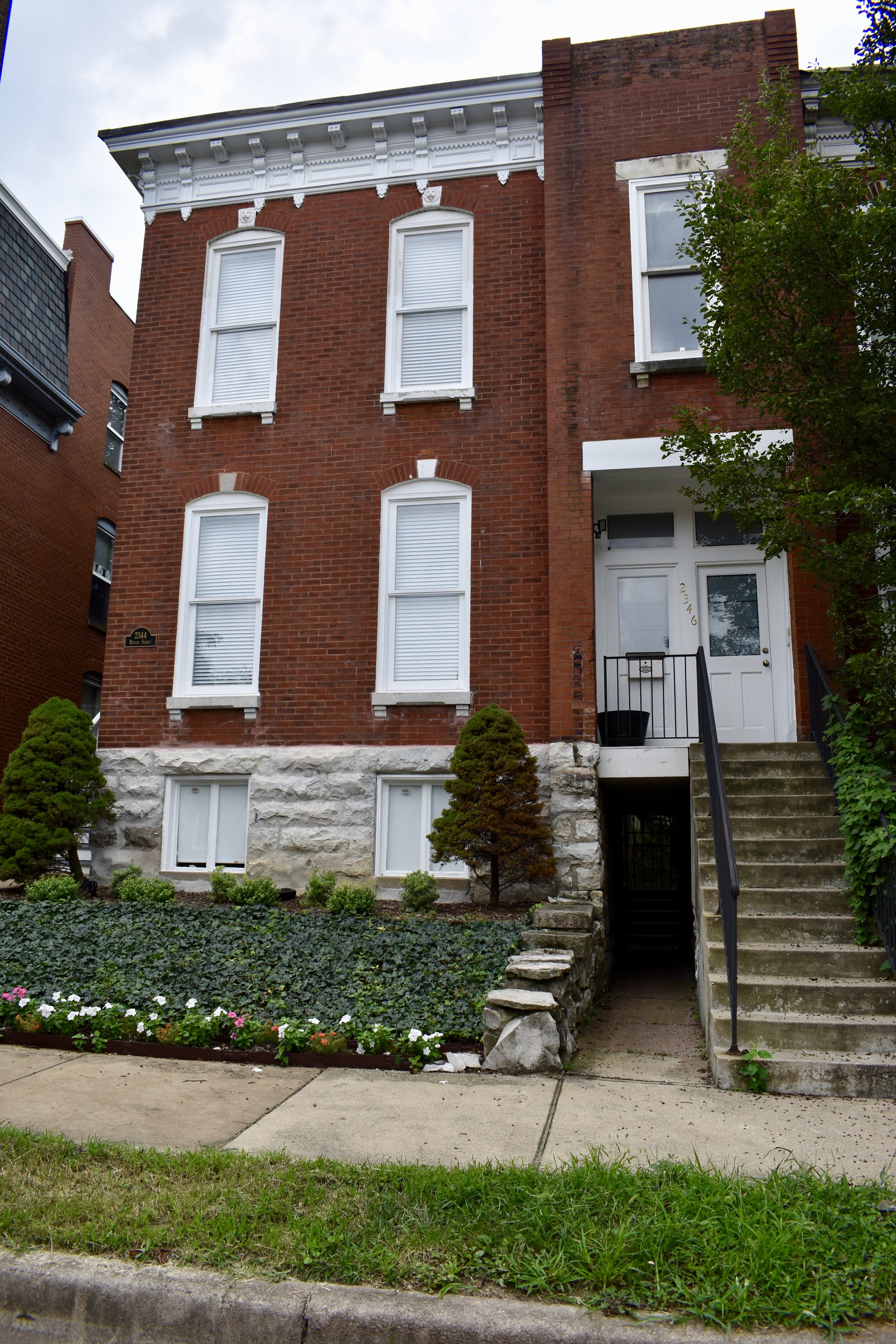

So if I missed anything, it’d be the diversity that can be lost in the uniform, contiguous row houses. The variation in styles and setbacks can be quite striking.
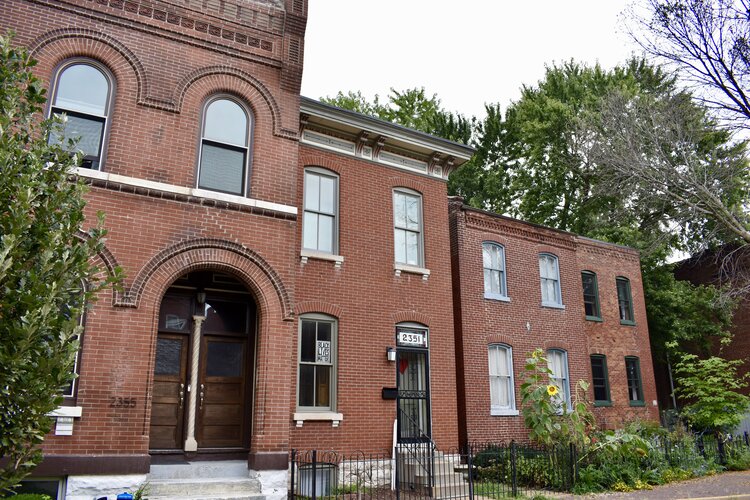
Also, the section of the neighborhood that mixes uses from former factories to homes looks so big city.

Noticeable Changes
Dolman Street is the star of the last ten years. I’ve documented this street below in the Additional Reading section if you’d like to see it through the years. A transformation has occurred, where this used to be a series of vacant lots, end-capped with a long-vacant former mop factory.
The high-end architecture seeks to repeat the neighborhood styles with modern materials. While there is a spectrum of success, you can see some of the best examples of historic infill in all of St. Louis.
New construction on Dolman continues as of publishing, where the narrow cul-de-sac lots are seeing new homes. Couple this with the Bordeaux, a much welcomed 51-unit apartment building that was rehabbed recently. Per apartments.com, there are no units available showing the demand for apartments in stable neighborhoods.
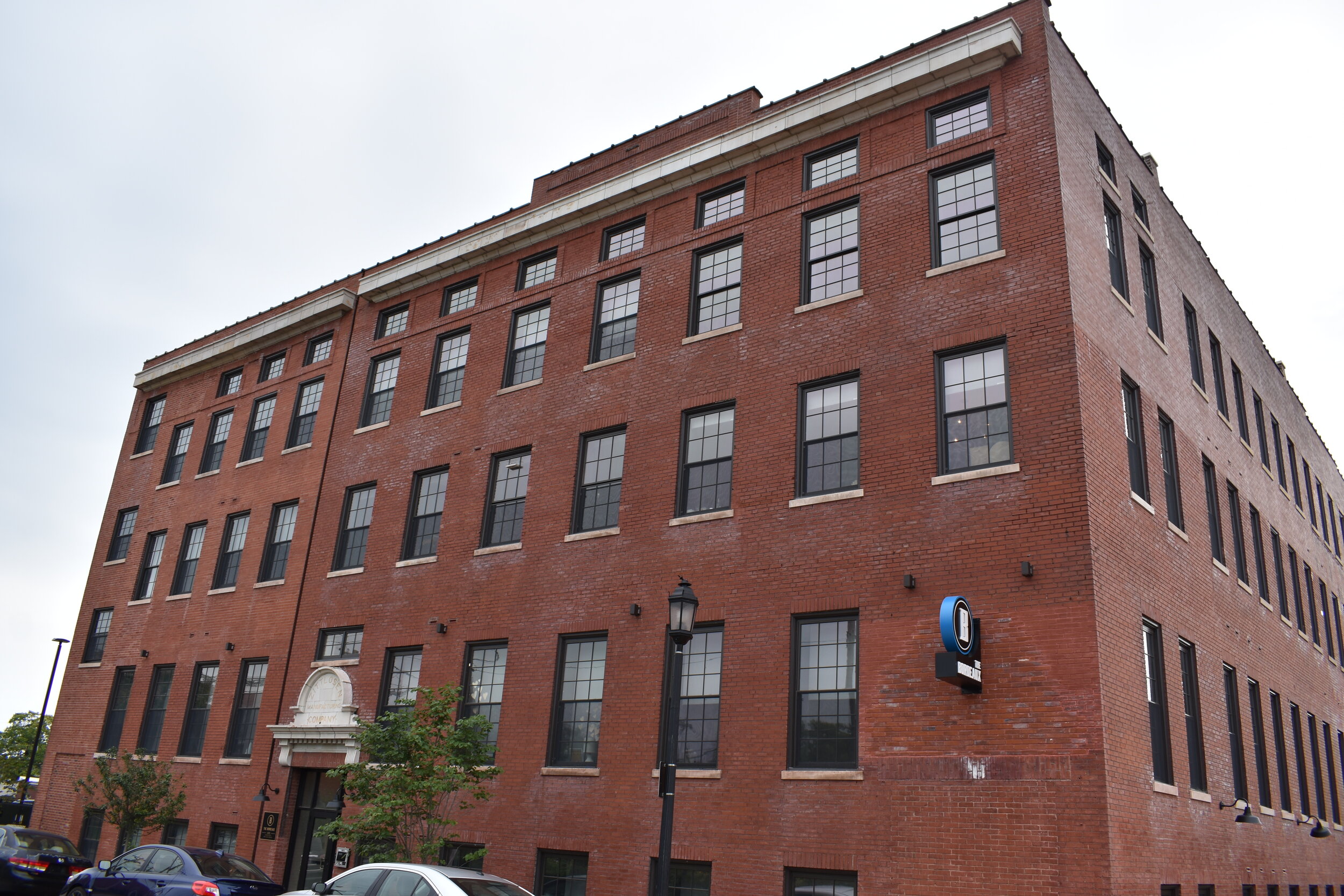
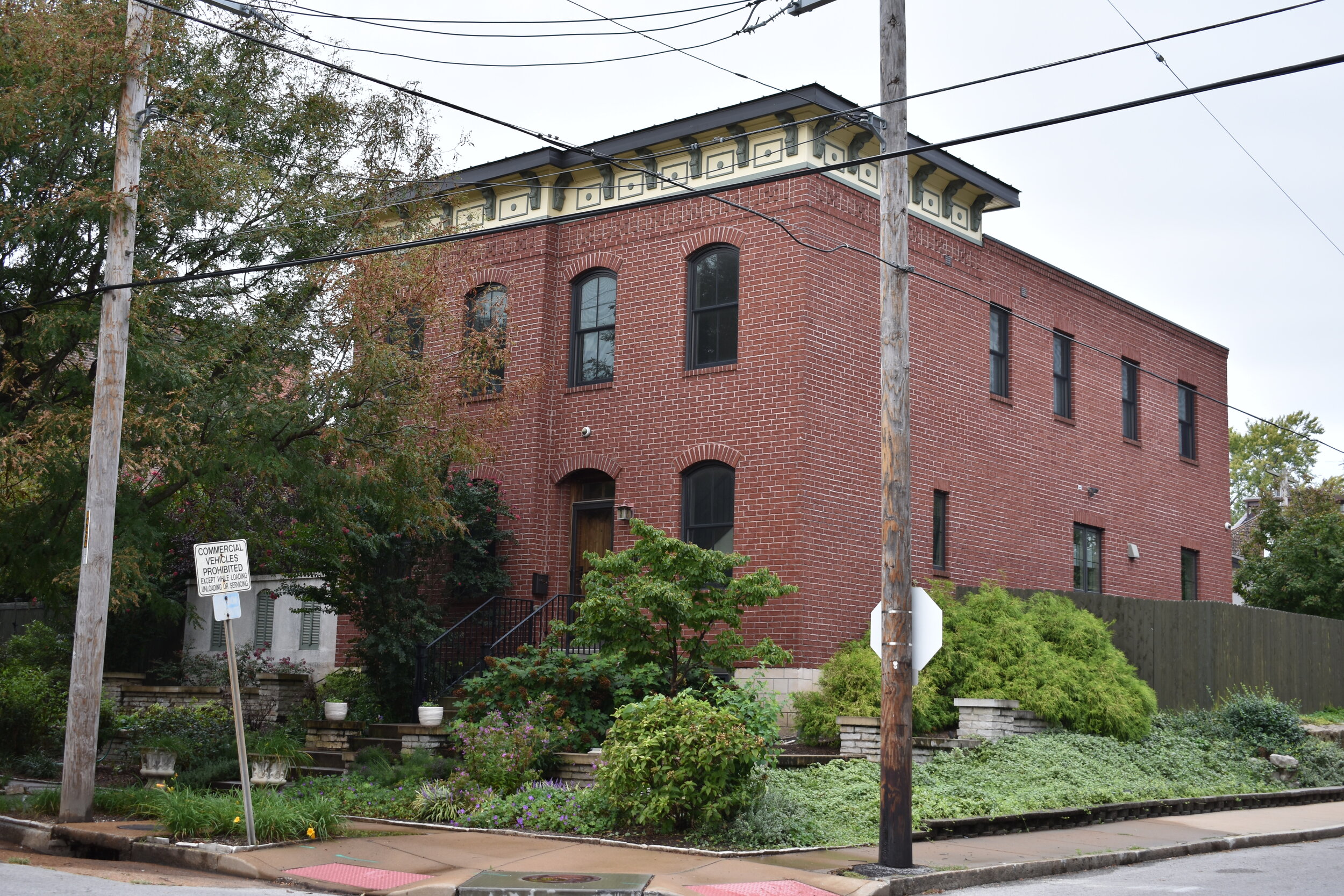
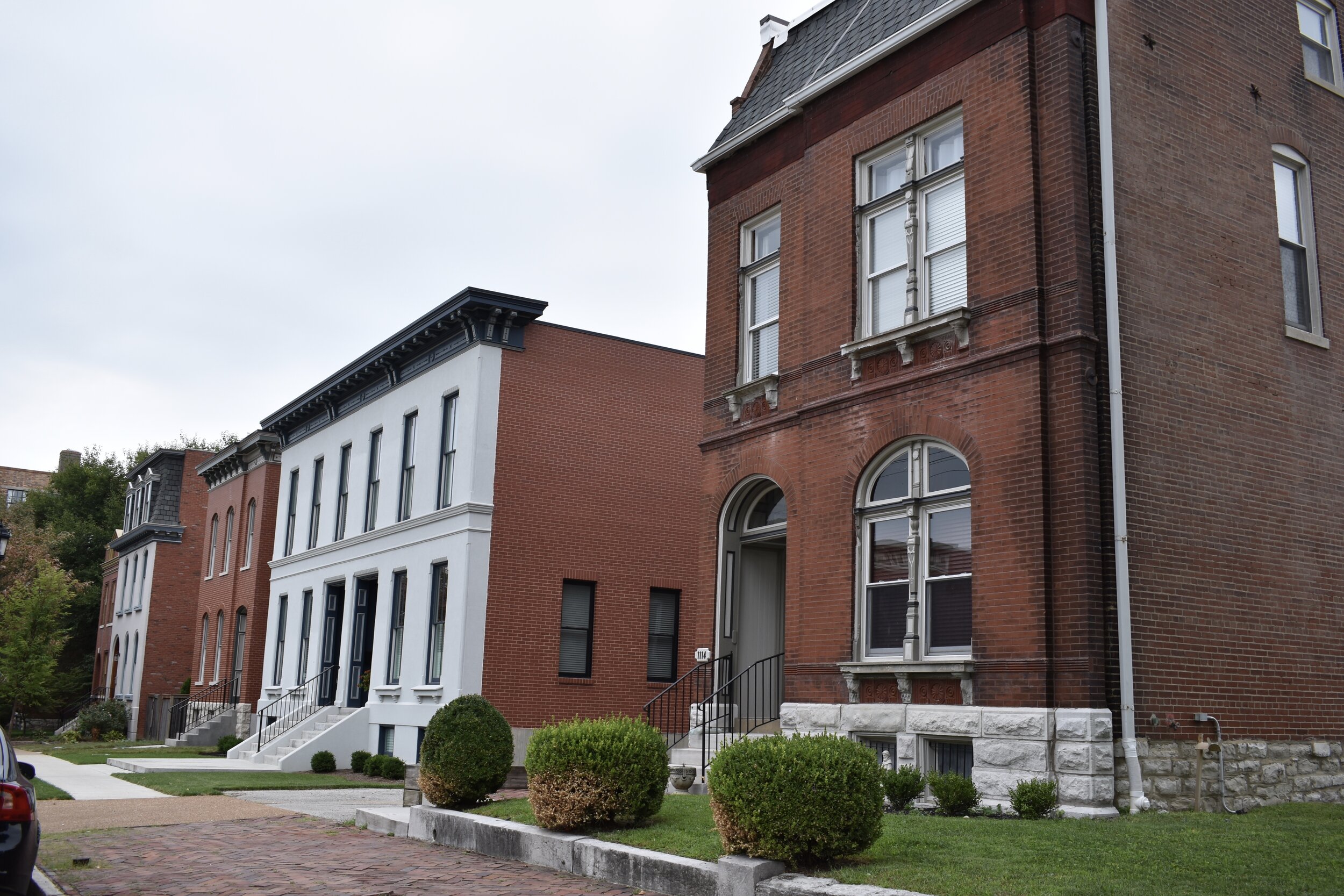
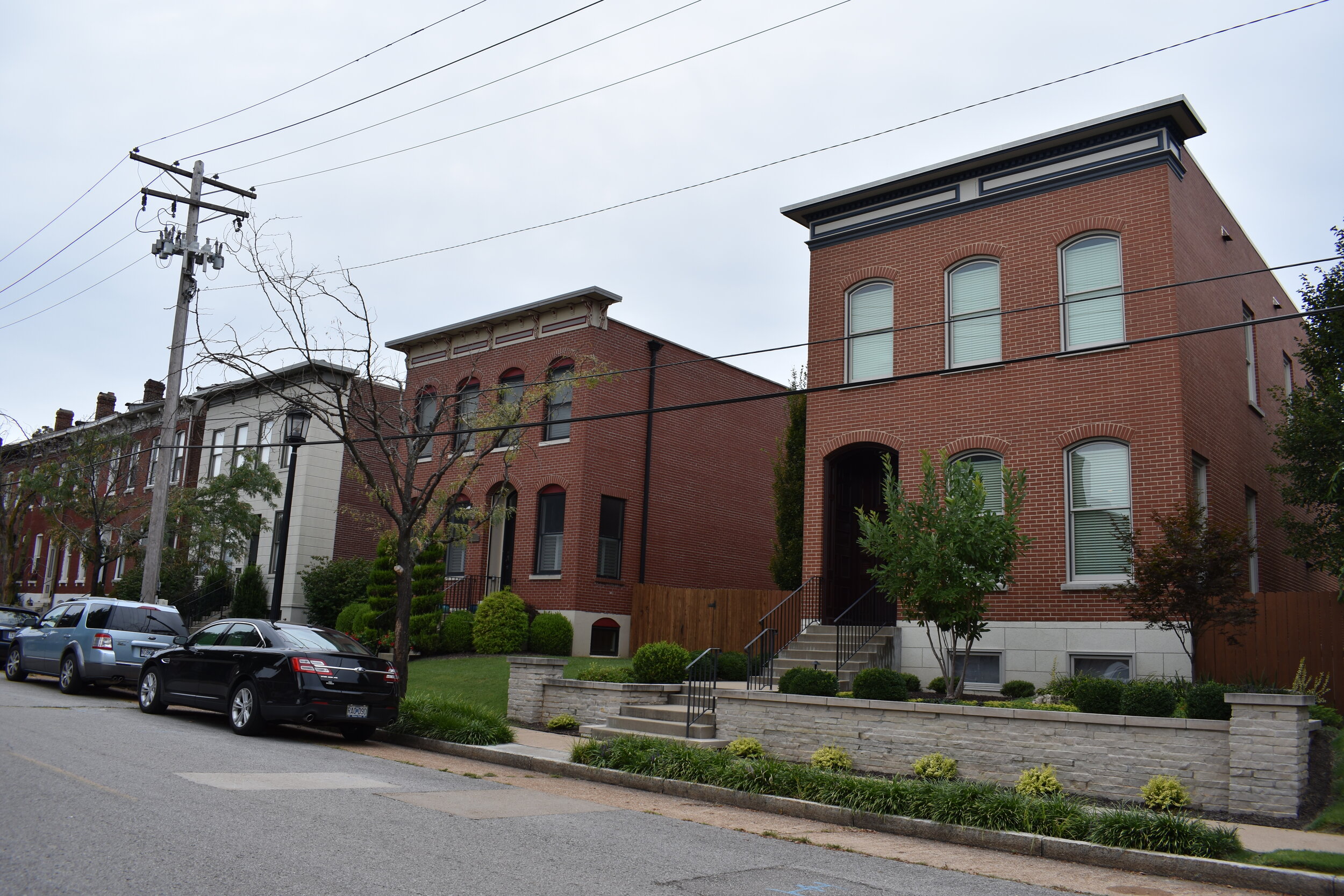

A massive hardscape project dating back several years and documented in the Additional Reading section has taken shape and started to blend well with plantings. While I’m no fan of dead ends and cul-de-sacs, the hardscape the doubles as traffic calming, especially on Lafayette Avenue have been quite welcoming.

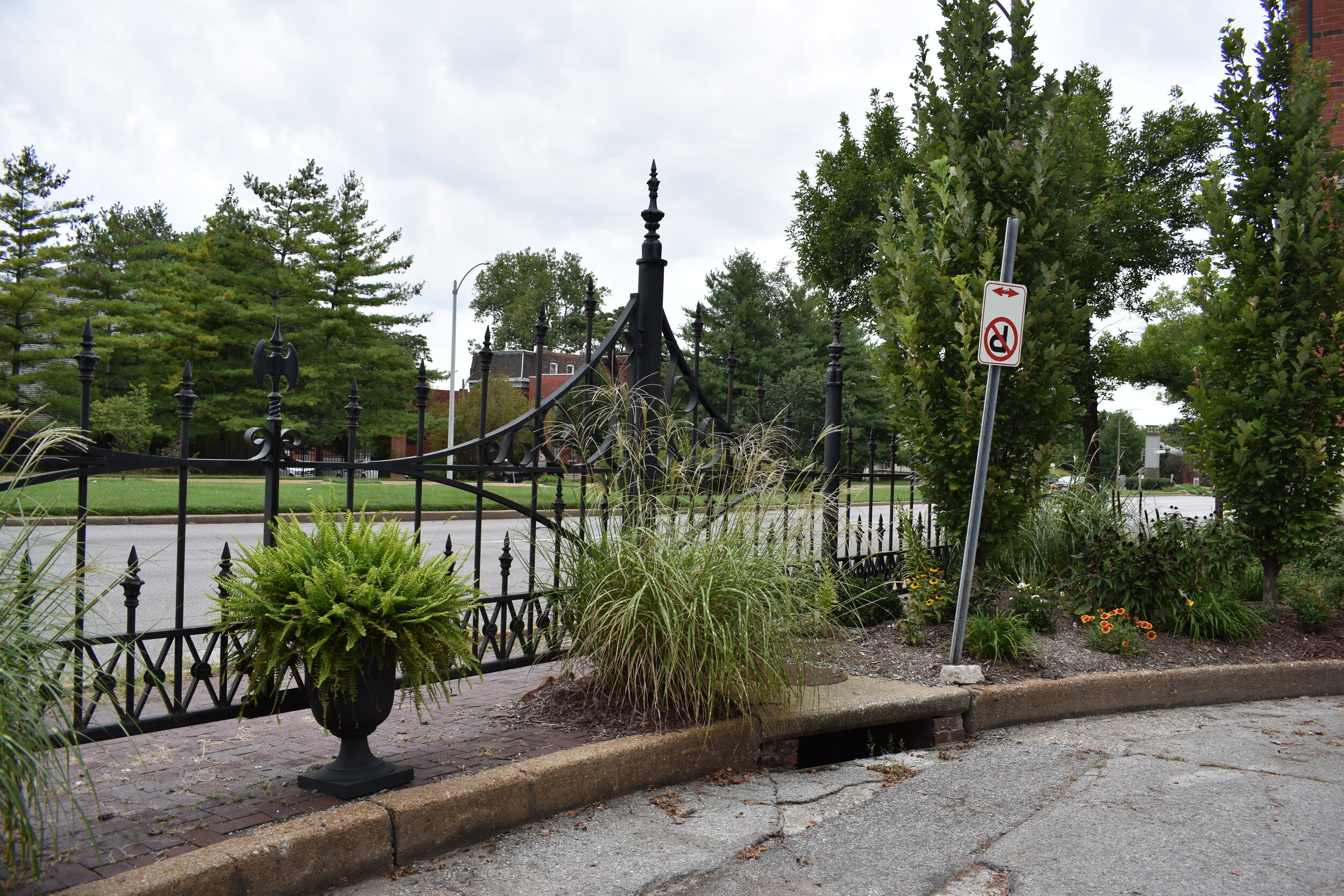
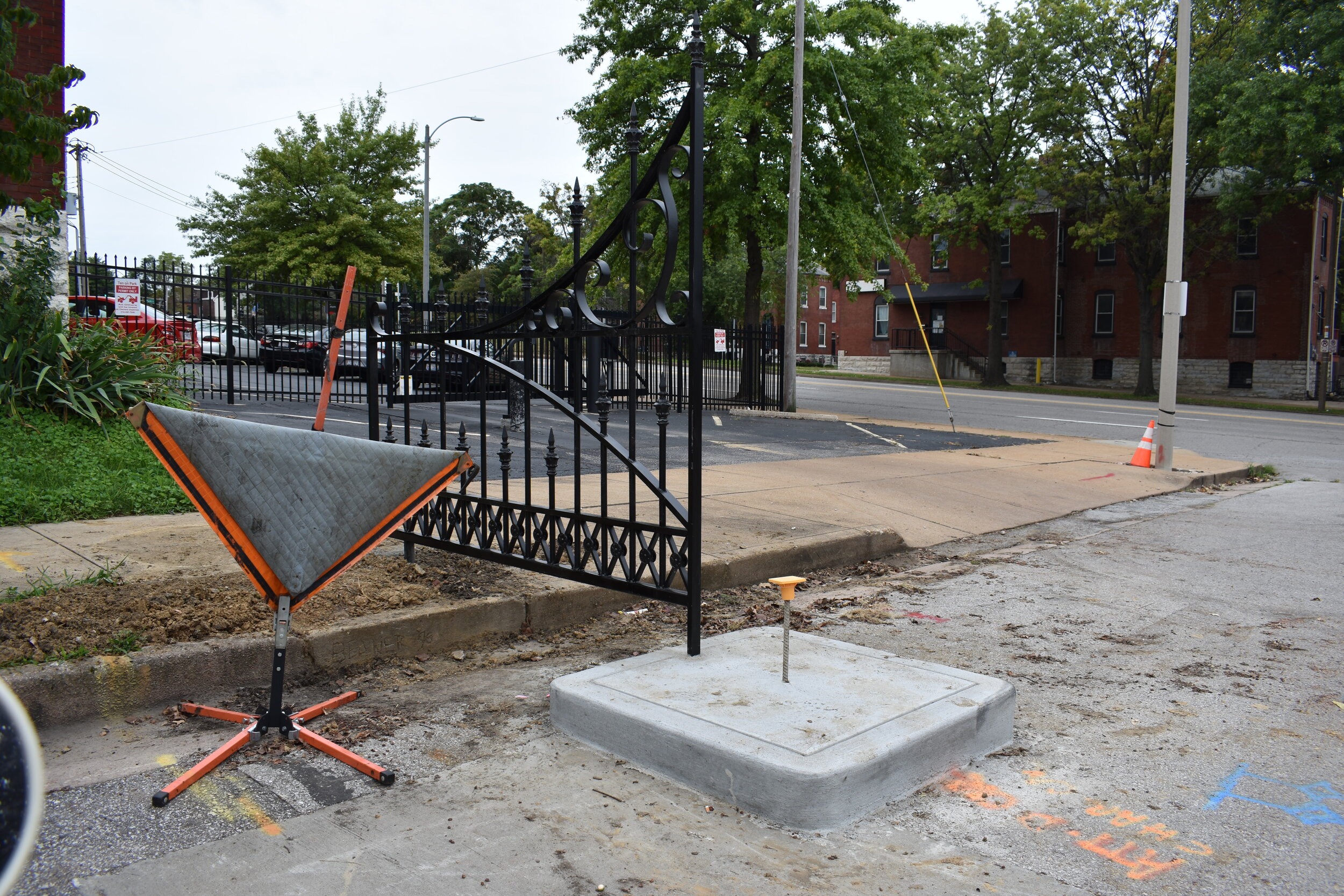

Lafayette Preparatory Academy, a K-8th grade charter school has invested heavily in the neighborhood with new construction and rehabbed spaces.

What Are The Future Needs?
There are very few vacant and boarded up properties in the neighborhood, but they do exist, so I’ll say get folks in those remaining spaces.
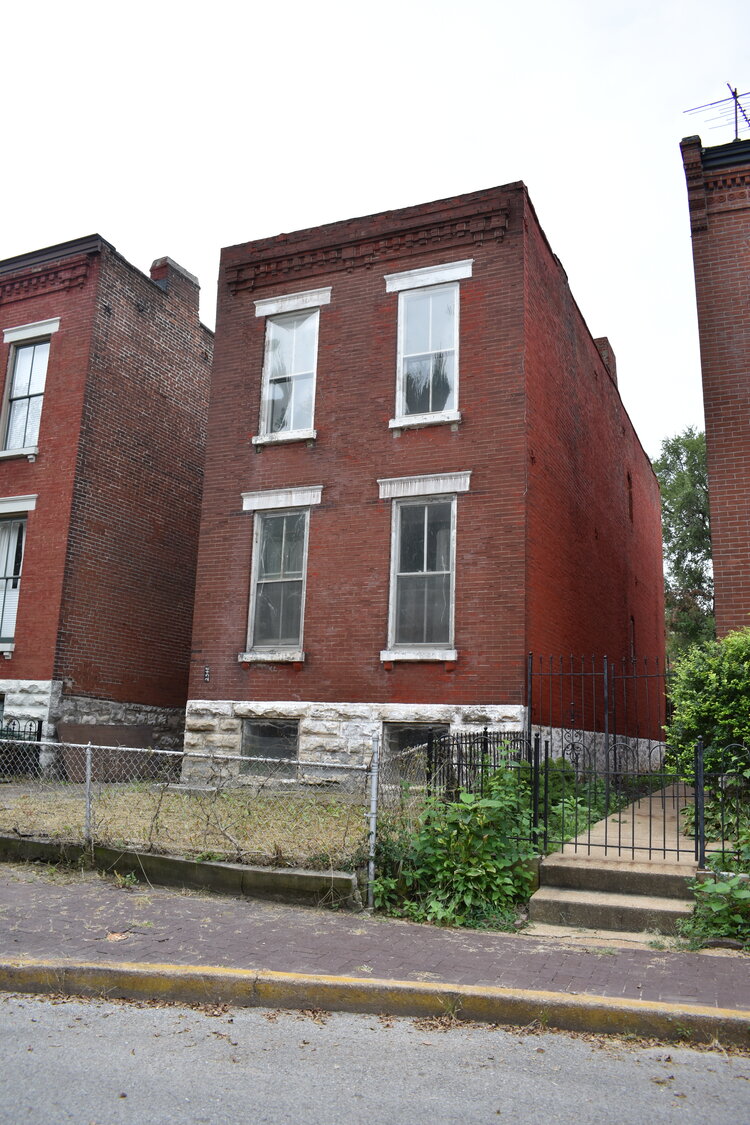
But the biggest attention zones are the Jefferson and Chouteau sections of the neighborhood. While plans have come and gone for the four story 1928 Das Deutsche Haus, the building is stunning and quite huge. A renovation of this space as well as an urban use for the former gas station/surface lot at Jefferson and Lafayette would do wonders for the neighborhood.

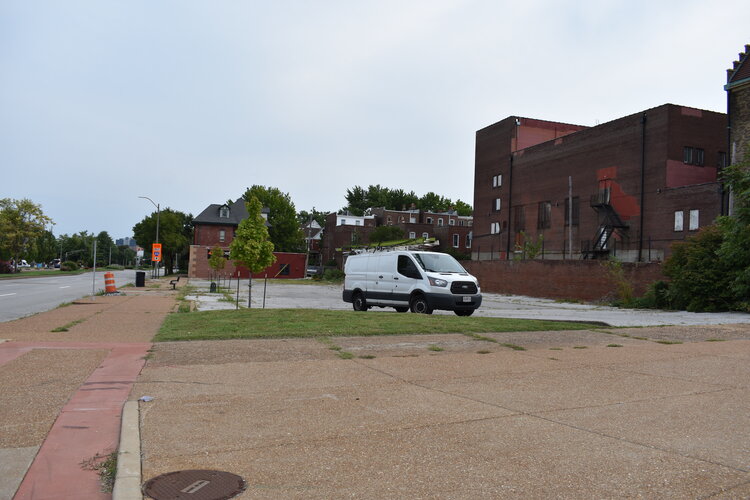
Then, the northwest section of the neighborhood is ripe for rehab and rebuilding. This section has been underutilized and non-contributing to the city as a whole for many years. That could all change in the near future.
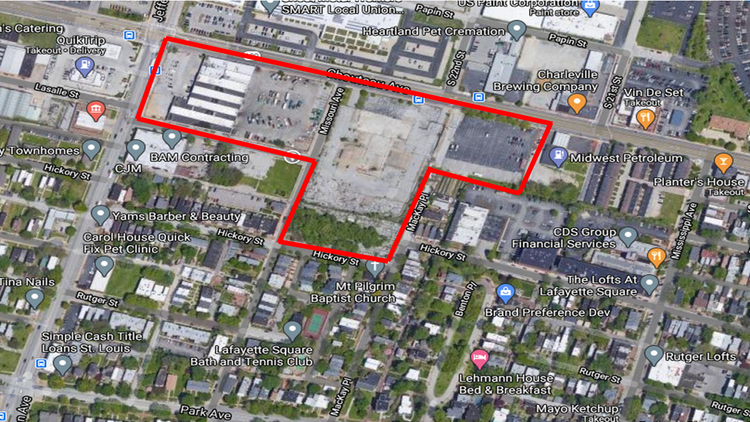

The former Praxair site and truck repair/sales operation that recently was purchased and shuttered at Jefferson and Chouteau will be the future of the neighborhood during the next decade. There is hope a return of the street grid vs. the mega-blocks that these sprawling operations brought.
The Lafayette Reserve, a recently announced project that will bring 14 new single family homes to an abandoned section of the neighborhood that currently looks like this:
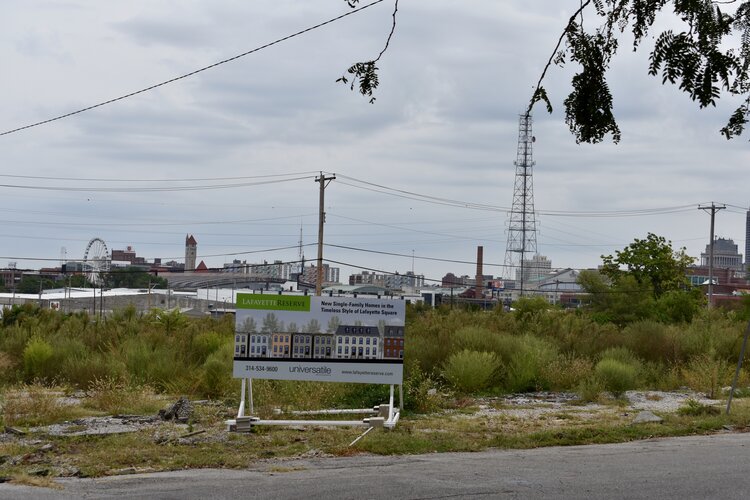
This project alone will return homes and 20’ alleys to these homes, recreating some semblance of a street grid.
The massive mixed use project proposed for the Jefferson/Chouteau expanses of vacant space could bring Lafayette Square much closer to a complete urban neighborhood including a more intact street grid. I’m sure the plans will evolve many times over the course of this project, but you can read all about the Chouteau Avenue Corridor Redevelopment on the Lafayette Square website.

As of publishing, public notifications are going up to communicate the coming changes to this part of the neighborhood. So, keep your eye on this part of St. Louis, it will be unrecognizable to those who’ve been paying attention for the last couple of decades.

Now, the cul-de-sacs the neighborhood put in to make Lafayette Square “exclusive” and cut it off from Jefferson are not going anywhere. I’m not so naive to think this the case, the neighbors like it this way. They like it quite and shut off from the Gate District and Peabody Darst Webbe. However, what they built is a freeway on Jefferson. People blow by at Interstate speeds because there are superblocks shut off from anything but driving fast. This is NOT how future neighborhood rebuilding needs to occur, especially north of Delmar. Truman, I-44, South Jefferson and Chouteau are barriers to the neighborhood. Massive traffic calming would have to occur to convince neighbors to open it up again. If this happens in my lifetime, I’ll be shocked and will be the first to taut the positive changes. But…I’m a realist.

